No.938 Friday 31st October 2025
varsity.co.uk
e Independent Student Newspaper since 1947





























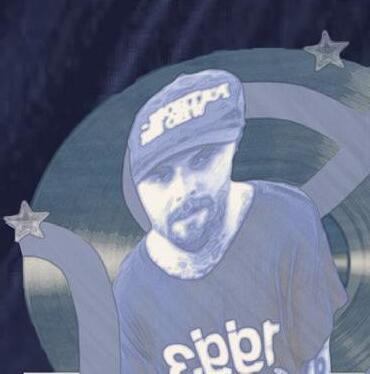








No.938 Friday 31st October 2025
varsity.co.uk
e Independent Student Newspaper since 1947









































Charlie Rowan Editor-in-Chief
Students have launched the rst women’s society at the University of Cambridge to be restricted to those de ned as “female at birth,” a move that has been criticised by other groups as “an assault on the trans community”.
On Monday (27/10), three students announced the formation of the Cambridge University Society of Women (CUSW) on X, saying the group would be the rst at Cambridge to o er a
“single-sex environment for women”. e society’s constitution de nes women as “adult human beings belonging to the female sex class”.
e move immediately provoked backlash from across the University. e Cambridge University Labour Club (CULC) called it “the latest assault on the trans community at Cambridge,” accusing the society of promoting “transphobic rhetoric under the guise of ‘free speech’,” while several societies issued a joint statement in support of the trans community. Halligan, a 22-year-old MPhil student
at Lucy Cavendish College, told GenderBlog.net that she founded CUSW after being unable to nd any single-sex societies at the University’s Freshers’ Fair earlier this term.
“ e signs and banners that I was seeing […] ere was not a single society that was just for women. It was a combination of women-[asterisk], womxn, or women and non-binary. I left the Freshers’ Fair and I felt like crying. I stood there – it was on Parker’s Piece, which is a central green common in the middle of Cambridge city – I stood there
and thought: well, if it doesn’t exist, I’m going to make it happen.”
She also described “the trans agenda” as “a form of propaganda,” adding: “Transgender ideology is the most regressive, homophobic, sexist, crucially misogynistic thing to exist in a very, very long time.”
Yet, she told Varsity: “It’s the case that some beliefs and aspects of identity can come into con ict with each other – that’s why disagreeing is such an important skill,” she said. “I acknowledge [claims of transphobia] as a point of


view, but I can’t respect a view that is so clearly not factually based and that will consciously erode the rights of women to have single-sex services.”
She saw the society’s creation as a way of preserving women’s rights to single-sex spaces. “If you’re a male person who seeks to enter into female spaces, that directly erodes the right of women to have a single-sex space in the rst place. And that’s just bad,” she said. “Our USP, the fact that it’s women only – isn’t
Continued on page 4 ▶

A fortnight is a long time in Cambridge. Putting this paper together over the past two weeks, our News team worked across several breaking stories. None of these are small, parochial tales, but are instead examples of major national issues piercing the Cambridge bubble.
As universities across the country face nancial crisis after crisis, Cambridge is not as immune as it would like to think. On our front page (p.1), we reveal that a serious miscalculation over in ation will lead to deeper departmental budget cuts than the 5% planned for 2024-25 and 2025-26. is looming austerity is puzzling when the same University has offered more than £55,000 to students in payouts for formal complaints
Alongside these data-driven stories are more personal ones. In our previous edition, we
revealed that college football teams will exclude trans athletes from participation. Now, college rowing has followed suit (p.3). is comes the same week as a group of students launched the Cambridge University Women’s Society, which is the rst ‘women’s society’ at the University to exclude transgender women from membership (p.1 and p.4).
To say this has caused a stir would be quite an understatement.
From the University’s alleged neglect of its sustainability commitments (p.6), to its increasingly relaxed guidance on AI usage, it’s clear that dials are shifting at the institutional level. Students, too, are recalibrating their University experience.

Our long read on Cambridge’s political societies explores how students are questioning their allegiances to national party lines (p.12). One man who knows this tension all too well is public gure-turned-podcast-
er Alastair Campbell, who speaks to us frankly about the Cambridge he remembers and his life experiences since (p.10).

To bring you into the Halloween spirit, our stories of spiritual healers and Cambridge ghost tours will give you a scarier side of Cambridge life beyond the weekly essay. But we’re not leaving it there. We ask, in both Science (p.16) and Film & TV (p.27), why we are so addicted to horror in the rst place.
So, as you bin your rotten pumpkins, we hope the following pages –be it an interview with indie legends e Hunna (p.26), or an exploration of the art of magic (p.25) –hold enough to help you through the Week 5 blues.


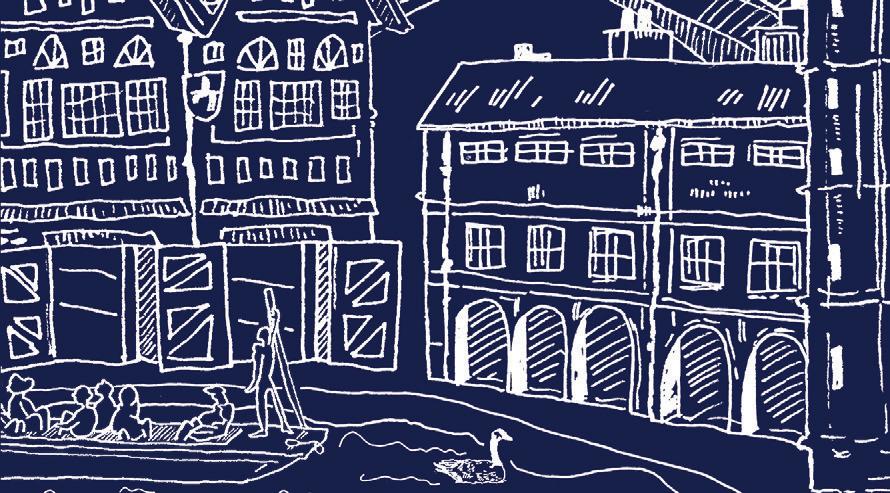
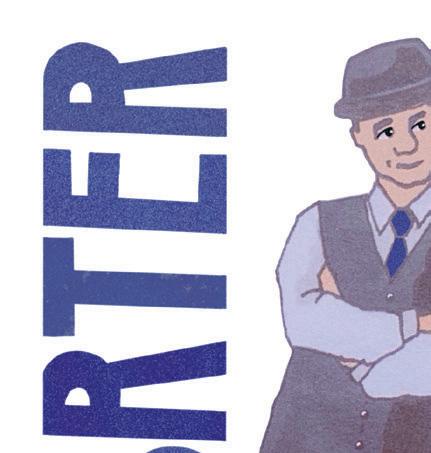
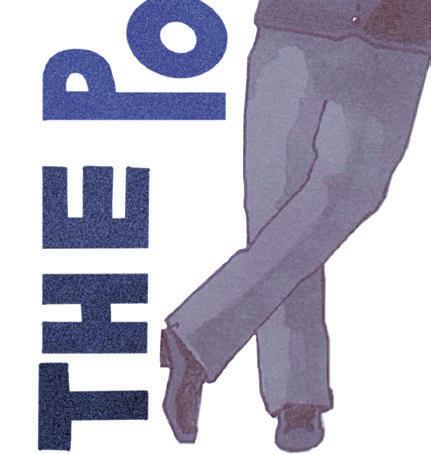
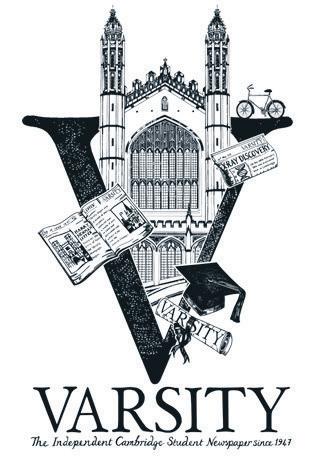
editors Ben Curtis & Charlie Rowan editor@varsity.co.uk
deputy editors Kezia Douglass & Calum
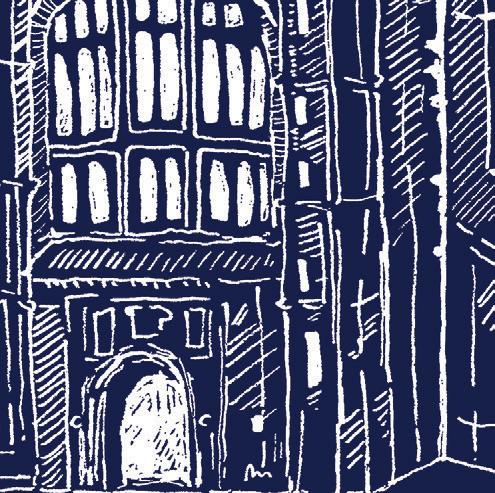

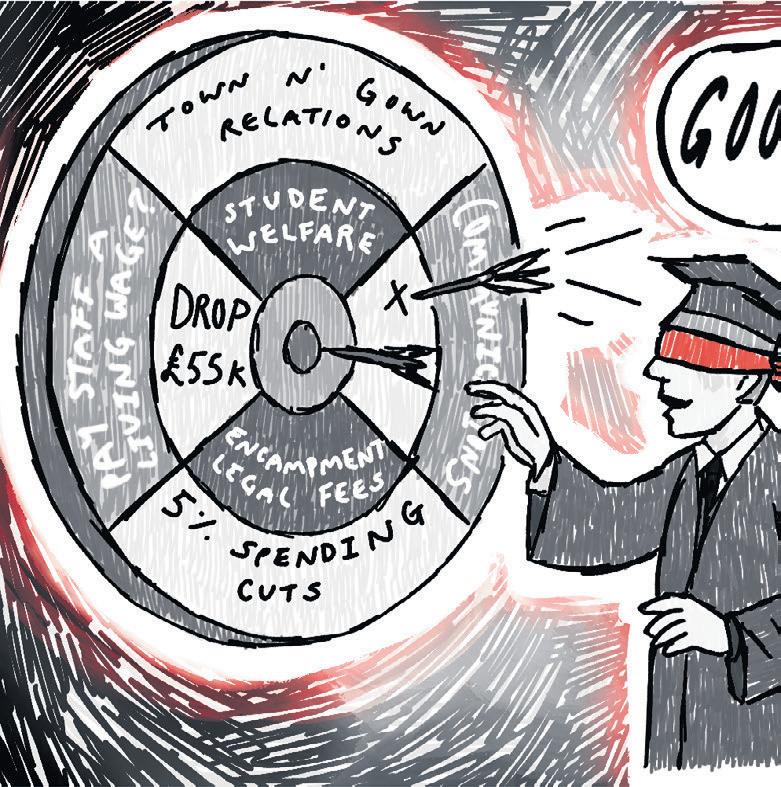

Murray deputyeditor@varsity.co.uk
vulture editors Daisy Bates & Ellie Buckley magazine@varsity.co.uk
news Georgie Middlemiss & Faron Smith (Senior); Alex Brian, Bethinn Feely, Max La Bouchardiere & Maria Eduarda Paixão (Deputy) news@varsity.co.uk
comment April O’Neill, Duncan Paterson & Daisy Stewart Henderson opinion@ varsity.co.uk
features OliviaGoodman&EmmaTenzler features@varsity.co.uk
interviews MariamAl-Badry,TaraBuxton & Wilf Vall interviews@varsity.co.uk
science Bibi Boyce & Ruby Jackson science@varsity.co.uk
sport Joss Heddle-Bacon & Ben Lubitsh sport@varsity.co.uk
lifestyle Jess Gotterson & Gabrielle Saraway lifestyle@varsity.co.uk
arts Emily Cushion & RyanVowles arts@ varsity.co.uk
fashion Mary Anna Im & Flossie Bullion fashion@varsity.co.uk
fashion shoot co-ordinator Chloe Jacob
film & tv Amanda Ljungberg & Julia Ongking lmandtv@varsity.co.uk
music Daisy Cooper & Seun Ige music@ varsity.co.uk
theatre Kaitlyn Butterly, Daniel Kamaluddin & Josh Pritchard theatre@varsity.co.uk
photography editors Amika Piplapure & Ruying Yang
illustrations editors Lyra Browning & Iris Chapman
chief sub-editor Saphia Arshad subeditor@varsity.co.uk
associate editors Ben Birch, Sophie Ennis, Alice Mainwood, Wilf Vall, Anuk Weerawardana associate@varsity.co.uk
business manager Mark Curtis business@ varsity.co.uk
varsoc president Wilf Vall president@ varsity.co.uk
varsity board Dr Michael Franklin (Chairman), Dr Tim Harris, Michael Derringer, Mark Curtis (Company Secretary), Sophie Ennis, Hugo Gye, Wilf Vall & Anuk Weerawardana (Directors), Lotte Brundle (Guest) & Zoah HedgesStocks (Guest)
Georgie Middlemiss Senior News Editor
Trans women will no longer be able to race in the Women’s Division of college-level rowing, after captains narrowly voted to approve a regulation change in the face of potential legal challenges.
A vote of college boat club captains on Saturday (25/10), organised by the Cambridge University Combined Boat Club (CUCBC), chose to align with British Rowing (BR) guidelines on gender division of competitive rowing.
Going forward, college-level racing will now be categorised into a Women’s Division and a new “Open” Division, with only individuals de ned as female at birth being able to compete in the Women’s Division. Before the change, college-level racing was organised into Men’s and Women’s Divisions, according to the self-identi ed gender of students.
e change directly follows BR guideline policy on ‘Trans and Non-Binary Competition Eligibility’ released in August 2023.
27 captains voted to align with BR guidelines, 23 voted against, and 2 abstained. e voted change to the ‘Regulations for Racing’ of CUCBC has now come into e ect, with the rst race under the new rules, the University IVs, beginning on Monday (28/10).
Following the changes, trans women are now barred from competing in the Women’s Division and forced into the newly-established ‘Open’ Division, racing alongside those de ned as male at birth.










meeting called by CUCBC, the governing body that organises all college-level rowing, including organising races and setting guidelines.
In Saturday’s emergency meeting, college captains were informed that, if the vote fell against adopting British Rowing regulations, CUCBC would likely cease all college races until further notice to avoid potential legal action taken against the club.
CUCBC were advised by the University Sports Service that they would be at risk of credible legal challenge if they did not comply with the rules of their sport’s national governing body (British Rowing).
In the case of such legal action being taken against the Combined Boat Club, CUCBC Executive and Senior Committees were informed the University legal service would not support them nancially in mounting a response.
At the emergency meeting, the Committees informed captains that CUCBC could not a ord to defend itself in the case of legal action.
Additionally, according to the University of Cambridge Sport guidelines released in September 2025 on ‘Student Eligibility Criteria’, University sports clubs not abiding by applicable law may be at risk of “legal action against the Club and/or to deregistration as a Recognised University Sports Club.”
Upon anonymously surveying members of DCBC, and consulting multiple legal opinions, Budenberg issued a statement to CUCBC outlining the legal arguments for his vote against, aside from the discrimination and anxiety he

His statement asserted that current BR guidelines are under re-
view and not nalised, and that the motion would go against multiple articles of the CUCBC Constitution on equality and discrimination.
e current British Rowing policy reads: “Trans, Non-Binary and all other individuals will be eligible to compete in the Open category.”
All college boat clubs, as well as boat clubs a liated with the University, are members of CUCBC. It is a separate organisation from the Cambridge University Boat Club (CUBC) which organises the teams competing on behalf of the University in the annual Varsity boat races.
e narrow margin by which college captains voted to restrict trans athletes
British Rowing claim their policy “recognises the right of an individual who has transitioned to participate in sport in their a rmed Gender whilst ensuring that such participation does not unfairly a ect competition and does not a ect the safety of fellow competitors.”
In CUCBC’s organisation, each club is accorded 2 votes, typically for captains of the women’s and men’s divisions, or in the case of women’s-only college boat clubs 2 votes for the club captains.
e British Rowing policy outlines that for “non-competing” “Recreational Activity” trans and non-binary individuals may compete in their self-identi ed gender.
group, Trans Liberation Cambridge (TLC), alongside other activist groups. Individuals holding transgender and pride ags took to the centre of the river on a small dinghy, blocking multiple of the races from occurring.
A spokesperson for TLC told Varsity: “We, Trans Liberation Cambridge (TLC), have disrupted the University IVs Regatta race today, the rst to take place under the CUCBC’s new trans-exclusionary rules, to protest discrimination against trans students, and draw attention to yet another step in the broad campaign of exclusion and marginalisation that is taking place in this city, as it is in the rest of the UK.
“ e University of Cambridge, rather than resisting this campaign in commitment to its professed principles of equality, diversity, and inclusion, has chosen to advance it. e administration’s shameful intimidation of undergraduate student committees to exclude their trans peers from sports and social life comes at a time when the dubious legal rami cations of the 16 April Supreme Court ruling in For Women Scotland Ltd v e Scottish Ministers are far from settled.”
A spokesperson for Cambridge University Combined Boat Club told Varsity: “CUCBC is responsible for organising collegiate rowing races between college crews. Following guidance and recommendations from the University Sports Committee, CUCBC voted to align its eligibility regulations with those of British Rowing, the national governing body for the sport.
Ben Curtis Editor-in-Chief
A Cambridge University academic has been photographed expressing solidarity with proscribed organisation Palestine Action.
Dr Belinda Bell, a member of the Land Economy faculty, wore a black t-shirt emblazoned with the message “We are all Palestine Action” at a ProPalestine Rally on 10th October.
Around 150 people took part in a rally in Cambridge city centre, bringing tra c to a standstill. e ‘Shut it Down’ protest was organised by the Cambridge Palestine Solidarity Campaign to mark 2 years of the war in Gaza.
Bell is a co-director of Finance for Systemic Change, a group which aims to “enact rapid and meaningful change within the existing nancial system”. She is also a visiting fellow at the Judge Business School, and received the Vice Chancellor’s Award for Public Engagement with Research.
Palestine Action was proscribed as a terrorist organisation in July this year, after a group of activists broke into RAF Brize Norton and caused £7 million worth of damage. As a designated terrorist organisation, expressing support for the group is punishable by up to 14 years in prison.
More than 2100 people have been arrested at demonstrations since the proscription was introduced.
is is not the rst time Bell has expressed support for Palestine. In May last year she was one of 400 University sta members and fellows to sign an open letter in support of pro-Palestine protestors setting up encampments on college grounds.
e letter called on the University to “disclose the University of Cambridge’s nancial ties with institutions and companies complicit in Israel’s violations of international law,” and to divest from those organisations.


One anonymous rower told Varsity: “Inclusion is the most important part of college-level rowing – the very nature
noted it would force upon transgender of college-level rowing is to foster an inis comes two weeks after the UniFootball Association (FA) guid-
versity advised college teams to follow



ance which advised that trans women could not play in women’s leagues.


Multiple captains condemned the decision, with one stating they ing the league is “de ned by its Tuesday’s racing was interrupted by a local protest
were “disgusted” and another not-

“Whilst the interpretation of law and guidance in this area continues to evolve, aligning with British Rowing brings CUCBC in line with the approach taken by other UK universities and ensures compliance with national regulations and our legal obligations in competitive sport. In a meeting with the University Sports Service, guidance was provided that, as an independent club, CUCBC could be more open to legal challenge if its competition rules did not align with those of the national governing body. It was also outlined that committee members could carry personal legal responsibility. is guidance was shared with college boat club captains ahead of their vote.
“CUCBC recognises this is a sensitive issue for some members of the rowing community. e Club has been in regular contact with colleges to support members of their individual clubs who may be a ected. We are committed to continue to monitor this developing matter and to work with University Sport, the Colleges, and Boat Clubs to make rowing at Cambridge as welcoming and inclusive as possible for everybody within our legal obligations.”
Number of people who have been arrested at protests since the ban on Palestine Action was introduced
Bell is a former chair of trustees of the charity Mermaids, which was set up to provide care and support to transgender, non-binary and genderdiverse children andyoungpeople. Mermaids was investigated by the Charity Commission in 2024 after 62 complaints.
While the report did conclude the charity had been “mismanaged,” there was no evidence of misconduct.
Dr Bell is not the rst Cambridge academic to risk arrest. In 2023, English professor Jason Scott-Warren was arrested at a Just Stop Oil protest in London. At the time, he criticised the government’s “draconian anti-protest legislation”.
e University of Cambridge and Dr Belinda Bell were contacted for comment.
it funny that that’s controversial?”
he club has sought to register formally with the Students’ Union (SU), submitting a registration application last week (21/10), with the SU required to approve or reject a registration request 14 working days after the application. It is unclear what decision the SU will make. On SU registration, co-founder Serena Worley said: “here’s no reason why we shouldn’t be able to [register].”
On Tuesday, Cambridge University Labour Club released a statement saying: “CULC stands deiant, in full solidarity with our trans community, today and every day. he latest assault on the trans community at Cambridge comes from a newly-formed University society that pushes transphobic rhetoric under the guise of ‘free speech’. We reject this hatred in the strongest possible terms. Trans women are women. We at CULC are unequivocal about that.
“We remain an inclusive club advocating for trans rights, which are under attack from many individuals and institutions, including the Supreme Court. We stand in full solidarity with the trans community and welcome everybody who shares our values of decency, tolerance and respect to CULC events.”
A statement from Girton College FemSoc read: “Transgender and genderqueer individuals have been and will
continue to be crucial to our cause as feminists. Feminism without intersectionality is not efective, considerate, or productive. Feminism has and always will be a cause striving for equality for all. Girton College Feminist Society and the signatories of this statement would like to re-emphasise that we are safe spaces for transgender and genderqueer students.”
he statement was endorsed by 27 student societies across Cambridge, including several college FemSocs, Cambridge Girl Talk, Cambridge Rape Justice, Cambridge University for Reproductive Rights, Cambridge University Menstrual Health Society, and he Feminist Files among others.
A spokesperson for Gender Agenda, a student feminist society, told Varsity: “Gender Agenda: Cambridge’s Feminist Collective exists to stand for all oppressed by patriarchy. We will continue to prioritise delivering a material impact for women’s lives here at Cambridge, from our outreach and fundraising initiatives to our events. Our society has always been, currently is, and will always be open to and deeply value trans and non-binary people, many of whom play large roles within Gender Agenda and in our vital work. Trans and nonbinary people are always welcome at Gender Agenda.”
Cambridge University Butchsoc also condemned the group. A statement read: “Butchsoc denounces this rhetoric and
society. We are and always have been a safe space for all trans people”.
“Butchsoc reairms its solidarity with trans women at Newnham and across the University and wider city of Cambridge: there is no place for TERFs in our community,” they added.
hey concluded their statement, saying “Butchsoc is and will always remain a space created by and for trans people and their allies: we are a space of resistance and joy, and will continue to ight for trans liberation”.
On the Instagram statement through which the society was announced, 745 comments were left at the time of writing. One commenter, Sammy McDonald, the former president of the Cambridge Union, stated: “You do not speak for the LGBT community. We stand and fall together, always.”
However, some commenters expressed support. One said, “his sounds wonderful,” while another added, “You have more support than you know”.
CUSW Co-founder Serena Worley said the group intends to hold both private discussions and some public events, a “minority” of which will be open to men. Asked whether a trans woman could join, she said: “We would respectfully turn down that person. Now, if somebody who was female but identiied as male wanted to join, then we would welcome that perspective.
“Fundamentally, I think there are bigger issues facing women, more broadly

on this planet, yes, that we should advocate for as women … we’re trying to actually eventually move and focus on the big, actual problem,” she continued. his comes two weeks after Varsity reported that several women’s and non-binary college football captains expressed concerns about FA plans to ban college football teams from ielding transgender and non-binary players.
hat followed a Supreme Court ruling in April, which determined that “protect-
ed” single-sex spaces must be reserved for women as deined by their “biological” gender. he judgement also stated that transgender men could be excluded from women’s spaces because of their “masculine appearance”.
Cambridge SU condemned the ruling at the time, writing: “Trans, non-binary and gender-non-conforming people have always existed and will always exist, and their identities are valid irrespective of any court ruling.”

Faron Smith Senior News Editor
A timetable has been set out for members of the University of Cambridge’s governing body to vote whether to reveal the University’s most prestigious donors.
e Vice-Chancellor’s Guild of Benefactors was launched in 1998 in order to recognise people who have donated over £1 million, or companies who have given more than £1.5 million to the University and its colleges. However, despite claiming to o er recognition for the generosity of donors, the names of the donors on the list have been kept secret since 2014.
Now, following demands by members of Regent House, the University’s governing body, fellows are to be o ered a vote to decide whether to make the list public.
e impending ballot is the culmination of a move which began in June, when the University Council received a proposal for a vote – known as a grace – over whether to make the list public.
Signed by 94 fellows, the grace stated that “Members of the University have a right to know who its honoured funders are,” noting that otherwise members would not be able to “understand the nature of the institution of which they are a part”.
e grace additionally noted how, “paradoxically,” names of the members of the Guild have been carved into stone tablets, placed around a staircase in the Old Schools site. is area is deemed by the University to be a “secret area,” and
is thereby inaccessible to members of the community.
e petition was begun by Professor Jason Scott-Warren, an academic in the University’s English faculty. Scott-Warren is also a prominent activist, who has previously taken part in several environmental protests. In a blog post describing his reasoning for submitting the grace, he questioned why the University would “rather keep the names of their donors under wraps,” suggesting that it may be to prevent “reputational risk,” caused by accepting donations from controversial gures.
Scott-Warren pointed out “regimes that kill journalists in cold blood, autocracies that imprison protesters for decades on trumped-up charges, oil and gas companies, [and] people who fund climate change denying think-tanks,” as possible sources of reputational risk for the University.
In response, a spokesperson for the University of Cambridge said: “ e University has robust due diligence procedures to scrutinise strategic relationships, donations, and sources of funding, backed by specially formulated Ethical Guidelines.”
The announcement of the grace comes after a controversy in 2024 when it was revealed that the University had accepted a £20 million donation from Majid Jafar, CEO of the largest private upstream oil and gas company in the Middle East.
At the time, Scott-Warren told Varsity that the University “persistently side-


lines ethical considerations in its e orts to secure donations,” while a member of the SU claimed that the University “continues to procrastinate its commitments to stop our complicity in this destruction”.
A spokesperson for the University, commenting on the Jafar donation, said: “We are immensely grateful for this personal donation from a Cambridge alumnus and his family, supporting the establishment of Cambridge Children’s Hospital and enabling it to carry out groundbreaking research and to improve the lives of children not only locally but also nationally and even internationally.”
e grace was subsequently submitted by the Council on the 30th July, pending the setting out of a timetable for a vote to take place. It has now been announced that members of the Regent House will now have the opportunity to vote on the grace between the 24th November and 3rd December.
Currently, all major donations are reviewed by the Committee on Benefactions and External and Legal A airs (CBELA), a committee of the University Council. However, this committee was criticised by a 2023 report into University of Cambridge ties to fossil fuels, which claimed that the “design of the CBELA decision-making process lacks clarity and transparency.”
e CBELA consists of 11 members, chaired by Vice-Chancellor Professor Deborah Prentice, with one seat reserved for a student representative.

Charlie Rowan
Editor-in-Chief
e University of Cambridge has o ered to pay out more than £55,000 in nancial settlements to student complainants over the past ve years, Varsity can reveal.
Freedom of Information (FOI) requests show that between 2019-20 and 2023-24, the University o ered to make 64 nancial payouts to students who lodged formal complaints under the Student Complaints Procedure or submitted academic appeals under the Examination Review Procedure.
While it is unclear whether the payouts were accepted, and, therefore, what the University spent, Cambridge o ered £55,128 across the period. e amount compensated per student varied signicantly each year.
£19,730
e amount o ered to 10 student complainants in 2023-24 alone
In 2023-24, the University o ered the highest average amount per complainant, at £1,973 per student – a total of £19,730 across ten cases. is was more than double the previous year, when Cambridge o ered £7,355 in total for nine student complaints, or £735 per complainant.
e largest number of nancial remedies was issued in 2019-20, when 22 students were granted compensation.
In its FOI response, the University said: “Financial remedies can be offered as a refund of fees, or as a distress and inconvenience payment. e case database does not record whether the student accepted the o ered nancial remedy.”
Astrophysics Professor Wyn Evans, Head of the 21 Group and member of the University’s General Board, told Varsity: “ ese are the cases in which the University’s internal complaints process has worked, and the student has accepted both the ndings and a nancial settlement. Yet behind these are far more serious situations – cases where students, having exhausted every internal avenue, have been forced to take their complaints to the O ce of the Independent Adjudicator for Higher Education (OIA) or even to the courts.
“ e 21 Group is currently aware of four active legal actions under the Equality Act, brought by Cambridge students seeking justice for mistreatment by the University. e nancial and reputational cost of these cases is substantial, exceeding £100,000 each – yet the human cost, borne by the a ected students, is far greater.”
e payouts come a year after Varsity reported that Cambridge projected a £53 million de cit amid a “lack of budgetary control”.
e University of Cambridge was contacted for comment.







We are a European consultancy firm focussed on analytical and quantitative topics and the development of sustainable solutions to bring about positive change for our clients.
What does d-fine offer you?
- Diversity: Work with clients on topics ranging from financial engineering and machine learning through to climate risk and healthcare
- International: Collaborate in project teams staffed across Europe
- Education: Acquire new skillsets to broaden your technical and professional repertoire
Who do we look for?
Master’s or PhD-level graduates in STEM fields


Alifeofintellectualleadershipandinfluentialscholarship.
TheINSEADPhDoffersatrulyglobalexperience.
WithcampusesinAsiaandEurope,theprogrammecombines rigorousresearchtrainingwithavibrant,internationalcommunityof scholars.


PhDstudentsbenefitfromclosecollaborationwithworld-classfaculty andstrategicallianceswithTheWhartonSchoolandSorbonne Université,gainingexposuretocutting-edgeresearchandinnovative teaching.Graduatesgoontolaunchsuccessfulacademiccareersat topbusinessschoolsworldwide,producingimpactfulresearchthat shapesthefutureofbusinessandsociety.
AttheINSEADPhD,wenurturethebrightestandmostcreativeminds fromdiversebackgrounds,equippingthemwiththetools,mentorship, andglobalperspectiveneededtobecomeleadingresearchersin management.


Areyoureadytolaunchaprestigiousandglobalacademiccareer? Submityourapplicationnowforentryinmid-August2026.Weinvite final-yearundergraduatesandpostgraduatestudentsfinishingtheir studies,fromanybackgroundandsubject,toapply.
inse.ad/why-insead-phd | inse.ad/phd-apply | inse.ad/phd





Wilf Vall
Associate Editor
Cambridge academics have been encouraged to “incorporate sustainability into their teaching,” amid allegations that the University is neglecting its climate commitments.
e annual report from the Board of Scrutiny – the University’s internal watchdog – has expressed concerns that the University is giving “the impression
that sustainability is no longer a priority for the University,” after it failed to publish a paper on progress towards the University’s environmental sustainability commitments in July this year.
is comes after the Board recommended, in a previous report, that a paper on sustainability be published imminently – alleging that the University was lacking urgency on their climate policies.
e Board has also recommended that individual members of sta take greater
responsibility to ensure sustainability in their conduct, which could be achieved through “incorporating sustainability into their teaching”.
A University spokesperson rejected the claim that sustainability is being neglected, telling Varsity: “Climate change is one of the four key priorities of the University of Cambridge. e Director of the University’s major climate initiative, Cambridge Zero, has just been appointed Chief Scienti c Adviser to the UK Department for Energy Security and Net Zero.
“Cambridge Zero is also supporting students and academic sta who are incorporating climate change into the teaching curriculum in a number of Departments and Faculties, while the University is convening a broader community of practice in relation to climate education and social justice ahead of COP30.”
ey continued, “Cambridge has more than 230 current climate-related research projects, and has supported a substantial number of climate spinouts from University researchers. Operationally, the University is committed to reducing energy-related emissions from our operational estate to absolute zero carbon by no later than 2048”.
Among the General Board’s other
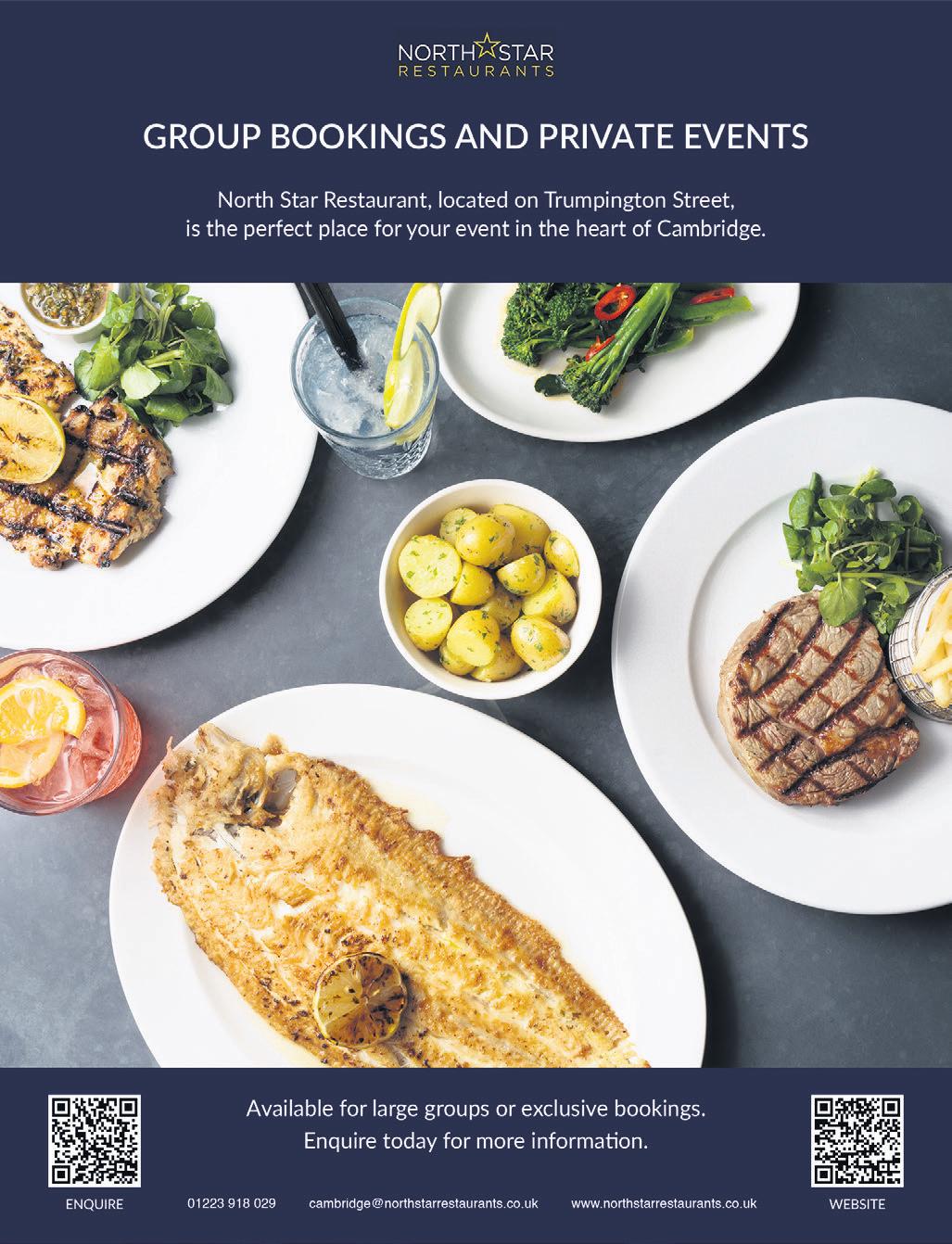
recommendations was support for the development of a speci c sustainability budget for the University. is proposal came from a report by Eunomia, an external consultancy rm on global sustainability. e rm claimed that the University had made “signi cant progress in embedding environmental sustainability”, but called for further action on the issue.
unethical” university.
is framework was introduced after the University was accused of “sidelining ethics” after it took a £20 million donation from Majid Jafar, owner of the Middle East’s largest private oil company. Jafar’s donation was intended towards the development of the Cambridge Children’s Hospital, which will be East Anglia’s rst specialist children’s hospital – serving a population of nearly 1.5 million children.
ese criticisms come following a string of high-pro le rollbacks of University sustainability policy. Last year, Varsity revealed that the University would consider accepting donations from fossil fuels companies, having previously placed a moratorium on new donations. e new policy only allows the University to accept these donations in “exceptional circumstances,” such as donations that are worth millions of pounds. is framework was labelled “absurd” by one member of the University Council, who labelled Cambridge a “fundamentally
UK-based oil and gas companies BP and Shell have jointly donated more than £19.7 million to the University since 2019, according to the Financial Times Attempts to de-carbonise aspects of University services have also lost momentum, with the Cambridge Students’ Union scrapping their controversial commitment to campaign for 100% plantbased catering earlier this month. In their reasoning for scrapping the commitment, the SU’s executive committee stated that they wanted to focus on more “important” sustainability issues amid a “change in circumstances” of their sustainability goals. e policy will now be scaled back to campaign for 75% plant-based catering across the University.
















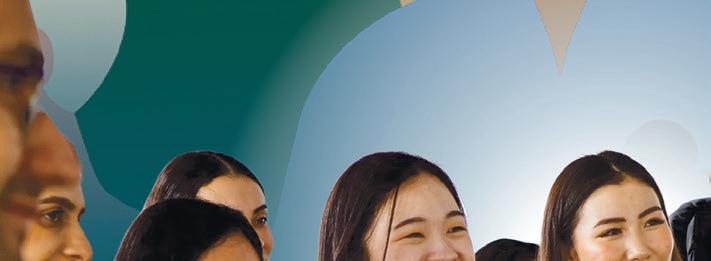



































































































Georgie Middlemiss Senior News Editor
e University of Cambridge has released new guidance for students and sta on the use of Generative AI (GenAI), which states students may use AI in personal work.
While noting AI may “provide useful responses,” the guidance outlines a set of general principles for the use of Generative AI to best mitigate against “legitimate ethical concerns” associated with its use.
Additionally, it acknowledges that the wide variety of study at the University means that “appropriate use is better de ned locally by Department, Faculty or College depending on the context”.
e newly-released guidance states: “Students are permitted to make appropriate use of GenAI tools to support their personal study, research and formative work.” However, it advises that students should acknowledge AI’s use when it has contributed to a signi cant unchanged portion of the work.
Individuals should “always check with a member of sta ” or “check speci c usage guidance with relevant areas of the University.” For sta , it reads similarly: “Sta are permitted to make appropriate use of GenAI tools to support their own work.”
e new guidance largely re ects the university’s previous stance on AI, after the pro-vice-chancellor for education
told Varsity in 2023 that ChatGPT should not be banned, as “we have to recognise that this is a new tool that is available”.
as e cient as possible to mitigate these e ects”.
In the principles for usage outlined, the University emphasises that the data and information utilised by GenAI is not su ciently referenced which can thus lead to both “inaccuracies” and “di cul-

are also potential



AI may utilise data containing “social biases and stereotypes”. ere privacy dangers in using AI in that the tools may utilise or store indimation. It advises individuals to “not share anything per-



A more detailed set of guidance reminds students of the statement from Plagiarism and Academic Misconduct guidelines released in 2023, that “using any unacknowledged content generated by arti cial intelligence within a summative assessment as though it is their own work constitutes academic misconduct,” unless the assessment brief speci cally states otherwise.
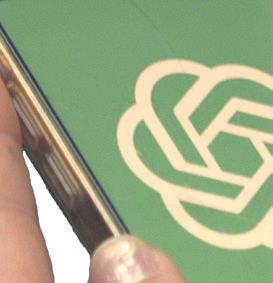

Meanwhile, examiners may use AI “in the processing and formulation of their own comments and feedback,” such as using it to consolidate their notes and rephrase comments. However, they are not permitted to submit student work to GenAI in any case, and must not use the tools to analyse student work or provide



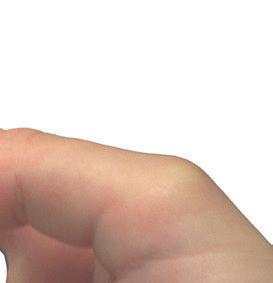

The guidelines also pointed to the “severe environmental impact” of GenAI, noting its intensive power and water usage, and as a result advised students be careful about extended usage of the tool. Students should brief
In response to the new guidelines, Cambridge Climate Society told “We are concerned that the University is engaging in a similar attempt of shifting the onus of environmental action onto students and sta while eliding its own role in the development, and nancing of environmentally and socially harmful

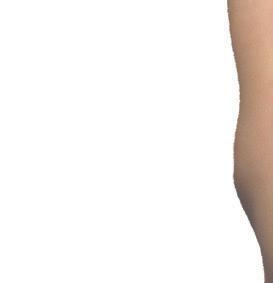
use the tool only “as and when necessary and be




ey added: “We appreciate that the University administration is mindful of the serious environmental and social impacts that extensive AI usage can engender, and we broadly support the inclusion of advice which is aimed at discouraging ine cient usage practices. at said, the current framing perpetuates the narrative that sustainability is an individual burden, a narrative employed by carbon majors to displace their responsibilities.”



Earlier this year, a Varsity survey found over 60% of its students had used ChatGPT in their work, a 14% increase from 2023. e survey, which received over 330 responses from Cambridge students, also found that 29.7% of students have used the AI chatbot to help with assessed work, such as coursework or exams. Meanwhile, 34.5% of all students surveyed reported never using it. is follows an ‘AI’ category for academic misconduct being introduced for the rst time in 2023/24, with examiners reporting three cases of AI-linked academic misconduct. ese were the rst reports of its kind at the University. It also comes after the University launched “AI clinics” earlier this year, to assist academics and students in the e ective use of AI for their research, claiming the tools can help enable a “new wave of scienti c discovery”.

Owl soars back An owl returned to Girton’s Halloween formal this Thursday (30/10). The last time an owl made an appearance at the formal was in 2022. After concerns were raised linking the owl and Harry Potter themes to JK Rowling’s transphobic views, college figures decided to change the formal’s theme in 2022. In an email sent to Varsity, Girton confirmed that an owl was due to appear this Thursday, adding that although “an owl has been invited from time to time as part of the student’s Halloween celebrations,” there is no “owl tradition” at the college. The college stressed that this upcoming theme is “unrelated to Harry Potter”.
Cantab chosen as UN leader
Cambridge PhD candidate Tanatswa Amanda Chikaura has been recognised as a young changemaker who has helped advance the UN’s Sustainable Development Goals (SDG). Chikaura’s research interests are centered on autism, mental health, and suicide prevention. e Zimbabwenian PhD candidate is also the Founder and Director of Ndinewe mental health organization in Zimbabwe. Chikaura said that young people have “the ideas, solutions, creativity and so much more to add to the development of our nations [...] We are not only the future of tomorrow but the leaders of today.”
Union jets in Jensen
e Cambridge Union is to pay for a private jet for Jensen Huang to y from London to Cambridge. Huang is the founder and CEO of NVIDIA, and is the sixth-richest man in the world. He is set to receive the Stephen Hawking Fellowship on the 4th November. e Hawking Fellowship is an annual award given by the Union in recognition of an individual or group who has made an impact in science, technology and communication. Previous recipients include Bill Gates and Dr. Jane Goodall. e ight from London to Cambridge takes half an hour – a slight improvement on the 45 minute train journey.
Dr Louks victim of deepfakes
Former Cambridge PhD student Dr Ally Louks was trolled last year for her thesis on the politics of smell in modern and contemporary prose. Dr Louks received death threats, negative comments on social media and even threats of sexual violence. is past week (23/10), Dr Louks took to X again to share that she had been a victim of an “inappropriate AI-generated video” of herself. She added that she “loathes that this is what women on the internet have to deal with now”. Dr Louks concluded, “if you ask AI to make sexual videos of people and distribute them online, I think you are absolutely foul.”
SIMPLY PRESENT YOUR CARD IN STORE

Grafton Centre Ping Pong Parlour to shut next week
e Grafton Centre’s Ping Pong Parlour will close on Monday (3/11) as part of a major redevelopment of the site. 80-year-old Penelope Brown, a regular user of the Parlour, said she was “distressed” to hear it was closing. “ e free access gives us much fun, social contact and great opportunities to move rather than sit,” she explained. Table Tennis England, who run the facility, said they were working with councillors to nd a new location. Pioneer Group, the company turning the former shopping centre into labs, added that the Parlour had been kept open “as long as possible,” and that they were exploring “opportunities for future table tennis provision”.
Fireworks display to return to Midsummer Common
“A breath-taking and magical kaleidoscope of colour and light” will grace the skies above Midsummer Common this Saturday (1/11). Cambridge Fireworks Night will run from 6pm to 9pm, with the rst rockets set to go up at 7pm. e show is being crafted by Pains Fireworks, who have promised “a variety of new effects”. Established in 1862, they are the oldest reworks display company in the UK. While there will be no bonre, the event does promise music, food trucks, and a ra e. Walkabout acts include a 13-foot puppet operated by ve puppeteers from Austin Dance eatre.
Devolution bill could let mayor scrap Mill Road bus gate, warns MP
Sam Carling, Labour MP for North West Cambridgeshire, told a House of Commons committee that Conservative mayor Paul Bristow could use the devolution bill currently going through parliament to scrap the Mill Road bus gate. In his statement last week, Carling used evidence from the campaign group Mill Road 4 People, which supports the barring of most private vehicles from Mill Road Bridge. Bristow has said he plans to use new devolution powers to designate the road as a key route network, allowing him to ditch the restrictions. Carling’s suggestion of more clearly de ning “key route network” to prevent such a move was not carried.
Charlie Rowan and Jack Lawrence Editor-in-Chief & News Correspondent
e University of Cambridge has reduced its projected de cit from £62.6 million to £39 million for next year after imposing controversial spending cuts across all departments, an internal report has revealed.
But Varsity can reveal that aws in the University’s nancial modelling mean the real-terms reduction, initially supposed to be 5% cuts over 2024/25 and 2025/26, will now be higher than planned in the next academic year, as Cambridge has underprojected in ation for the coming academic year.
Under the University’s nancial system, departmental “Chest” allocations – the core funding used for teaching, research, and administration – are adjusted each year to account for in ation before any planned savings are applied. If in ation is underestimated, those allocations fail to keep pace with rising costs.
e Board of Scrutiny’s latest annual report credited the narrowing of the decit largely to this two-year 5% savings programme, introduced last year.
Following Planning and Resources Committee (PRC) recommendations, the University’s Schools and Non-School Institutions were reduced by an initial 1% in 2024-25, with the other 4% due in 2025-26 according to the initial plans.
However, the in ation rate built into these calculations – taken from the University’s “10-Year Model” – assumes overall in ation of just 2.6% for 2025-26, well below the CPI’s current gure of around 4%.
Sta promotions, new compliance costs under the Employment Rights Bill,
and potential tax rises in the upcoming Budget are expected to push Cambridge’s e ective in ation rate even higher. As a result, departments face a 4% cut this year and will need to reduce spending by around another 1.4% next year simply to maintain balance with rising prices.
scribing the initial 5% savings as a “blunt instrument” that failed to account for the di ering circumstances of each School or Department.
While the Heads of Schools agreed that the savings target was “achievable,” the Board warned that some institutions were deferring di cult decisions by drawing on reserves, while others were freezing academic appointments. is stood in contrast to the University Council’s stated aim that “cuts should not a ect our academic o ering”.
e University s projected de cit for 2025/26, according to the watchdog
According to an unreserved business paper seen by Varsity, the University has indicated that it “may” increase departmental funding to recognise this higher in ation rate, but has neither committed to discussing mid-year increases in departmental spending to cope with in ation nor to funding this problem.
e University Board of Scrutiny’s annual report, published last week, o ers the clearest picture yet of how these cuts are shaping Cambridge’s nances.
e report warned that Cambridge’s nancial position “remains of concern,” despite “some progress” with the headline reduction of the de cit.
It stated: “Some progress has been made: in 2024-25 the Chest projected expenditure de cit was reduced to £62.6m, while, for the current year, 2025-26, the projected Chest expenditure de cit is £39.7m. However, the latter is after the previously announced 5% cut in Chest allocations.”
e Board also expressed unease over the uniform approach to cost-cutting, de-





ades. Backing down cannot and should not be an option. Making money from Cambridge’s brains is a no-brainer; ring the people who teach them is brainless. ere is a better path. Only if we students ght for it,” O’Reilly continued.
is follows several years of nancial turbulence at the University. Last year, Varsity revealed that Cambridge was projected to record a £53 million de cit for 2023-24, with the Board of Scrutiny suggesting at the time that “there is no clear understanding” of why this happened.
It also raised concern over the lack of transparency, noting that “there is apparently no mechanism to report precisely how the cuts are being made, without which the Council’s wish that academic delivery not be impacted cannot readily be measured”.
e University has run a Chest de cit every year since 2016-17, reaching a peak of £89.5 million in 2023-24. e Board described the ongoing shortfalls as “signi cant,” noting that Cambridge’s Chief Financial O cer had previously pledged to restore a “sustainable annual surplus over time” through revenue growth and e ciency improvements.
University Councillor Daragh O’Reilly told Varsity: “ e University’s call for cuts is as irrational as it is inequitable. While Cambridge’s tech-and-tourism economy booms, we should grow our income as a local economic leader, rather than cut back. When the University’s own research says our city’s GDP is growing 60% faster than the UK average, anchor institutions like ours should invest in growth, not austerity.
“Paired with recently-hiked tuition fees, students must ask whether they can stomach the biggest cuts in dec-







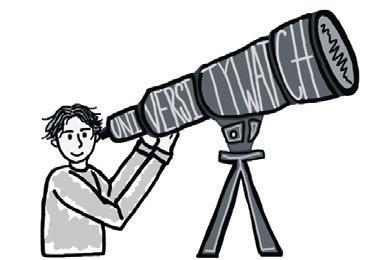
Tuition fees in England, currently £9,535, were raised last year for the rst time in over a decade. ey are set to rise annually with in ation from 2026 onwards, following a government announcement earlier this year.
is has coincided with a sharp rise in redundancy spending across the central University, who spent £78,263 on sta severance pay between December 2023 and 2024, nearly ve times the £16,848 spent in the previous year, according to Freedom of Information Requests.
5%
e University’s initially planned savings across 2024-25 and 2025-26, before error
It also comes as a quarter of leading universities have begun large-scale sta reductions or budget cuts, with 10,000 job losses projected nationwide by the end of the year.
e University of Cambridge was contacted for comment. £39m



KCL faces legal action over alleged visa withdrawal of pro-Palestine
King’s College London is facing legal action after reportedly withdrawing visa sponsorship for a student involved in pro-Palestine protests. International Relations student Usama Ghanem, 21, claims the University suspended him inde nitely after correspondence from the Campaign Against Antisemitism urged disciplinary action against protesters. Ghanem, who says he risks imprisonment and torture if he returned to Egypt, has led a High Court judicial review, alleging human-rights and discrimination breaches. KCL said it is “committed to upholding freedom of expression within the law” and that its disciplinary measures follow “robust processes”.
Tuition fees in England to rise with in ation from 2026
University tuition fees in England will increase in line with in ation from 2026, the government announced last week (20/10). Education Secretary Bridget Phillipson con rmed that fees will rise for the 2026-27 and 2027-28 academic years, with planned legislation to make future increases automatic. Fees could reach £9,900 by 2026-27, depending on in ation. Experts said the rise may ease nancial pressures on universities but warned that institutions will need to ensure any increases in fees remain fair to students. Maintenance loans are also expected to increase each year in line with in ation.
University of Derby reports data breach in redundancy letters
e University of Derby has reported itself to the Information Commissioner’s O ce after it was revealed, through envelope windows, that sta were at risk of job losses. According to the BBC, around 40 employees were a ected, with up to 265 roles potentially being cut amid nancial pressures from “frozen funding levels” and “rising operational costs”. e University said it “apologised for any distress caused” and launched a review of its mailing process. e University and College Union (UCU) criticised the handling as “ awed from the beginning,” with some sta saying the error left them embarrassed and anxious.






Alastair Campbell likes to be kept busy. roughout our conversation, his phone buzzes incessantly, with “30 or 40 different bids to go on television” and discuss the week’s events coming through. He doesn’t pull his punches, either; to say he’s a polarising gure would be rather understating it. “I make strong impressions on people,” he tells me, “some people loathe me and some people think I’m the bee’s knees”. Campbell combines politics, podcasting, and mental health advocacy, and remains as in uential a public gure as ever. 50 years ago though, he was a newly-matriculated undergraduate at Gonville & Caius studying foreign languages.
He talks about Cambridge with little enthusiasm; shrugging o the experience of applying, he tells me “I hadn’t thought about […] whether I wanted to [go], whether I cared; it didn’t bother me”. Campbell admits that he was “a bit snarky” in his admissions interview, and that he arrived with a chip on his shoulder, certainly not seeking to “make the most of it”. After some thought, he settles on a blunter summary of events: “ ere was a lot about [Cambridge] I really didn’t like”.

❝ ere was a lot about [Cambridge] I really didn’t like
Campbell paints a colourful picture of the environment he found. Caius didn’t allow women in until 1980 and seemed to o er “a kind of private school conveyor belt”. Both students and fellows would be “marching around in gowns,” or even “military uniform,” soundtracked by grating “braying accents”. He gravitated towards a group of three or four mates, but for the wider community he met, he says, with a look of slight disdain, “I’d never known people like that before”. ose student friendships he did make, he tells me, have been longlasting, but were likely borne out of a mutual fondness for “drink and antiestablishment[ism]”.
His drinking at this time casts a long shadow. For Campbell “drinking […] was probably a bigger driver in my life than anything” while at university. He reels o his problems, counting them on his

suitcase, maybe 30 quid in my pocket […] I saw my parents maybe once in the next year”. e distance between him and Cambridge seemed to do some good, he enjoyed the escape from “Voltaire and Balzac and Molière and all this stu ,” and enjoyed the opportunity to simply speak the language. “When I got back, I think I was in better shape,” he adds. After leaving Cambridge, Campbell worked odd jobs, including as a roulette dealer. He busked for a while, and was “making money playing music, footloose and fancy free,” and he assures me that he is a better musician than Tony Blair. Yet his alcoholism persisted, he “was still getting pretty whacked most days,” and when he was a young journalist for the Daily Mirror he still drank. All of this culminated in a psychotic breakdown in 1986.
❝ Life’s more challenging today than it was in my time
he realised he’d “crashed into a kind of non-life”. Describing this period as the “toughest mentally” in his life, he talks me through a heart-to-heart he’d had with his partner, Fiona Millar, on Hampstead Heath in “about 2004, 2005,” where “I ended up punching myself in the face, […] a very primitive form of self-harm”. Once again, Campbell’s honesty is slightly disarming, but he insists that he’s “never felt personally, the stigma and the taboo” surrounding conversations on mental health. His communication and campaigning, skills he developed in government, are now devoted to mental health advocacy.
ese will be familiar to any listener of e Rest is Politics, the podcast he hosts alongside Rory Stewart, that has become a phenomenon, particularly among younger audiences. “We did the tour last year and I think it was the Albert Hall, they reckoned about a third of the audience was under 30,” he tells me. When asked about having a younger audience that might be more receptive to conversations about mental health, Campbell reverts to campaign mode. At a societal level, he worries that mental health support is “going backwards,” and that changed attitudes are not enough when “services just aren’t there,” and that “people who don’t have money” have no way to access mental health services.
ere are currently 2 million people on mental health waiting lists, and Keir Starmer has come under re for not committing enough resources to mental health support. Campbell remains a proud Labour man, but when I press him on whether he feels the current Labour government are doing enough, he hesitates slightly, before saying “I do worry that mental health is not the priority I’d like it to be”. He thinks some more and then is pretty adamant: “I’d like more to be done, to be honest”.
‘I do thank my breakdown for quite a lot’ ❝
ngers, “I drank too much, no doubt about that, I sometimes made myself ill with it […] there was a lot of anger in me at the time”. is, he would only later come to identify, was depression, and Campbell speaks about his experiences of mental health in an un inchingly honest way. He’s unperturbed as he describes the e ects of depression and alcoholism, how he sat in the cinema “feeling absolutely paranoid […], thinking something really terrible is about to happen”. He calmly talks through feeling “almost […] imprisoned,” how he would say to himself “this isn’t for me, but I’ve got to be here”. At Cambridge, by his own admission, Campbell was angry, he was “prone to violence” and ghting, and was “probably quite lucky to stay in”. ere were a few happier moments, he points out. He smiles while telling the story of he and his friends inventing a new language, “where you change every vowel in every word to another vowel”. e three of them who speak it uently still write to each other in the code. ough it seems it was his year abroad that most meaningfully improved Campbell’s time at Cambridge; when asked if it changed anything he says, with no hesitation, “Yeah. A lot.” He relished growing up and becoming “much more independent”. Arriving in France “on my own, with one bag, one heavy
Speaking now, almost 40 years on, Campbell is quite circumspect. “I do thank my breakdown for quite a lot, actually,” he tells me, “I think it made me more resilient”. Faced with the prospect of returning to the Mirror in the immediate aftermath, Campbell says “even though the whole thing had been the worst period of my life on one level, within a few weeks I’m telling jokes about it”. Again, he speaks about depression in a refreshingly ordinary way. e breakdown toughened him up, and it gave him a “thick skin”. is “thick skin” has clearly been tested over time. Polarising as Campbell is, this resilient quality is probably useful. He tells me that it is about “working out what really matters;” for any public gure, “people have their views of you, that’s ne, but ultimately there aren’t many people whose views really, really matter”. He laughs slightly while talking through his social media comments: “some bloke, sitting in his underpants on his mum’s sofa, you know, saying that I should be shot, it doesn’t bother me”.
at’s all very well and good, but if you are receiving bloodstained letters in the post and if, upon arrival at the Hutton Enquiry in 2003, you are greeted by an angry mob calling you a murderer, even the most resilient of people might be stretched somewhat. Campbell pauses and says quite simply “it is amazing what you can get through”. Again, Campbell seems remarkably immune to others’ opinions: “if somebody’s going to throw a placard at you, as long as it doesn’t cut my head open it’s like ‘Ah well.’ It didn’t really bother me”. He describes blocking out the noise outside the court, being laser-focused and “absolutely in the mode” while giving evidence. His police escort apparently o ered him a backdoor way in, to avoid the protestors, and Campbell simply said “No, no, no. Bollocks to that”.
e Hutton Enquiry was one of the nal chapters of his time in Downing Street, six years marred by ”tiredness” and “overwork”. Campbell talks about how he kept working to “ ght my way” through “bad days,” and that to stop, or to even take a holiday, became impossible. It’s hardly surprising, then, that upon leaving government, Campbell “didn’t have a clue” what lay in wait. He su ered a “very bad depression” as
Some bloke, sitting in his underpants on his mum’s sofa, saying that I should be shot, it doesn’t bother me
Campbell now speaks in a world that, while not without its shortcomings, is far more receptive to conversations surrounding mental health than the Cambridge of the 1970s. He admits, however, that it’s “very hard” to maintain good mental health in contemporary Britain. So when I ask whether he thinks he’d have enjoyed Cambridge more were he to matriculate in 2025, his answer isn’t encouraging. He’d certainly “make the most of it,” but says, blunt as ever, “life’s more challenging today than it was in my time”.
From the “climate” to “populism,” there’s seemingly very little to inspire hope. It’s this exasperation which appears to re Campbell up, though. He tells me “if I can set my mind to something, I can do it”. It’s clear he’s not worn down by his life in the public eye but rather remains as energised as ever. Not a bad thing at all, as there’s plenty to keep him busy.


SCAN QR TO WIN



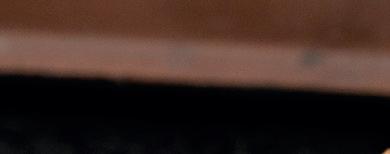











When the University of Cambridge Left Society (CULS) formed this summer, it issued a stinging rebuke of Cambridge’s oldest, and arguably most inluential, student political club – its Labour Club (CULC). A post on its Instagram proclaimed that “CULC’s attachment to the Labour Party has led it to produce merely surface-level criticisms of a government that has maintained the stranglehold of neoliberalism and perpetuated global injustice”.
In the weeks preceding, Labour had been taking a major beating from its student contingent – with two Labour clubs, Warwick and Newcastle, disailiating from the party. CULC, ailiated formally with Labour Students but not the central party, has not chosen to take such a stance.
Its rejection of political radicalism did not prevent the usual contingent of left-leaning freshers locking to Little St Mary’s Church to argue about wealth taxes and digital ID cards between sips of Carling. hat same weekend, UCLS held the inaugural ‘Shots and Socialism’, its competitor to the famous alcohol-fuelled debate night. he home of Cambridge’s progressives and socialists for almost a century has met a real threat – with the vicious spat between the two societies resembling national trends of rapidly declining Labour support among the 1624 age group.
Louis Welvaert, Cambridge University Labour Club’s Welfare Oicer, who was also involved in constituency-level party politics, was keen to emphasise the health of the society in the face of its emerging competitor. He denied “any particular problems with membership numbers or attendance and pints and policy” and emphasised “a lot of ongoing support for CULC even, and maybe especially, in the context of the foundation of UCLS”.
heir critique of student politics was structural
A few weeks before, I had met with the committee of the University of Cambridge Left Society (UCLS). heir critique of student politics was structural: Cochairs Rares Coclinau and Aidain Clair explained their purpose as an efort to “transform indignation, which is what has been plaguing this country, into organization […] into an actual material force that’s capable of challenging both the University and the wider systems of domination that it upholds.”
For them, student politics ought to resemble a programme for action, rather than an opportunity for debate and discussion. Claiming that “the existing institutions of student politics have long degenerated into these hollow vessels incapable of confronting the accumulating crises of our epoch,” the student politics big three – CULC, CULA and CUCA – ofered little more than a “spectacle” of “political expression”.
Clair criticised “a nicer, kind of more mature way of politics” that he felt prevailed at Cambridge and saw “being more active in the community,” rather than simply ofering a forum for discussion and “detached critique” as the goal

of the new society – a more “militant” approach to student activism. hey hoped to volunteer at homeless charities and food banks. CULC too have added a volunteering element to their work in recent years, as student political societies are increasingly acknowledging that putting principles into action in the community is as important as discussing national politics.
For Welvaert, however, the opportunity for debate and discussion that CULC provided was one of its biggest strengths. “I think CULC is a very important venue for political discussion in Cambridge,” he told me, continuing:
“I think it remains true that pints and policy, and other CULC sessions, in person and online, are some of the most important forums, in Cambridge and beyond, to discuss [left-wing politics].”
However, he was sympathetic to young people unhappy with the party.
“It goes without saying that the government’s response to the ongoing crisis in Gaza has been a disappointment, a real disappointment, and a lack of action on that front has been for many a standout disappointment – the standout disappointment.”
In August, Oxford’s Labour Club Chair Hattie Simpson spoke of a “revolt” over Gaza inside Labour’s youth wing, Young Labour and Labour Students. Society disailiations have been accompanied by a collapse in the party’s youth membership – from 100,000 to just 30,000.
Welvaert felt that within Labour “there is a risk of viewing dissent as treacherous,” blaming the party’s factional pendulum for silencing left-leaning voices as the government pursued stances on issues like immigration or
beneits that were at odds with the beliefs of its student supporters. However, within CULC, he argued that there was “a lot of room to criticise when necessary”. He believed the fact that they “still have a lot of involvement with the parliamentary side of politics” was a strength, rather than the weakness CULS claimed it to be, as it enabled politically engaged students to exercise inluence over national politics.
At Cambridge, the major parties appear healthier than elsewhere
Believing he could ofer an alternative for disafected Labour and Tory members, the Liberal Association (CULA) Chair Jack Peters was keen to speak to me. He believed there was “a faction of people on the right or the left who are more moderately grounded in liberal values […] and who will come into the Liberal Democrats.”
Accusing CULC of being “factional” and “pigeonholed into the Labour Party,” he claimed that CULA, despite being the only political society formally ailiated to a national party, was capable of challenging aspects of Lib Dem policy. In fact, he, much like Welvaert, saw association with a major party as a strength, not a weakness. “I’m passionate about the fact that change comes through institutions,” he told me, and pointed to the Young Liberal motion in opposition to the Online Safety Act that was passed during the Lib Dem Conference against
the party leadership as evidence. he traditional parties are not just losing the youth vote to Your Party and the Greens. here has also been an observed rise in young people choosing Reform in opinion polls. While the 1625 age groups remains predominantly left-wing, new research has shown a potential block of young men for which Reform has a signiicant appeal.
I was interested, therefore, to ind a mixture of ambivalence and disdain for Reform at a Conservative Association (CUCA) event held the following weekend. he recently unseated, and knighted, Sir Jacob Rees-Mogg had come to address the society under the backdrop of a party sufering somewhat of a wilderness period after one of its worst electoral performances in history. he question on everyone’s lips was whether young Conservatives should look to work with Reform, or stay loyal to the Tories, who trail Reform by almost ten points in opinion polls.
Rees-Mogg told the audience that between the Tories and Reform lay a “broad conservative family,” whose support could be harnessed for the sort of right-wing mandate the CUCA committee probably dreamed of. he prospect of working with Reform, however, troubled a lot of the people I spoke to, with one student telling me that “we don’t really know what their [Reform’s] ideals are, they have lip-lopped on many policies”.
When pressed on why he thought fellow right-leaning young men were turning to Reform, another student said “I can understand it,” explaining “take applying for internships, the amount of ones where it will be only people of
colour, or only women is ridiculous, and it is the same with scholarships.”
Another student, Will, said he had little conidence in Reform, asking “who’s going to be the Chancellor, who’s going to be the Home Secretary?” “I would rather stick with what I think is logical, rather than reactionary,” he said.
It appeared Cambridge’s right had not been won over by Reform, and CUCA remained an important institution to many of them. Another student, Rahul, explained: “It [CUCA] is quite a good thing for people who have more right-leaning views to converse, it’s not actually ailiated here with the Conservative Party, it’s a place where people with similar views, or even diferent views, can come and debate these sorts of issues,” echoing the arguments CULC members had made to me the previous week.
What was most striking was the fact that, at Cambridge, the major parties appear healthier than elsewhere – it lacks a Reform Society, and its Labour Club, for the time being, is yet to denounce the Party, as many others have done. It seemed hard, therefore, to completely buy into Clair's argument that “the existing institutions of student politics have long degenerated into these hollow vessels incapable of confronting the accumulating crises of our epoch”. For the time being, CULC, CULA, and CUCA are set to remain important forces on the student political scene. he presence of UCLS is perhaps symptomatic of a wider trend, as students at Cambridge, just like the rest of the country, are increasingly losing faith in the traditional parties as vehicles for engaging in politics.
With additional reporting by Emma Tenzler.
Francesca Evans meets Pembroke's rst female head gardener to explore the stories behind the college’s historic gardens
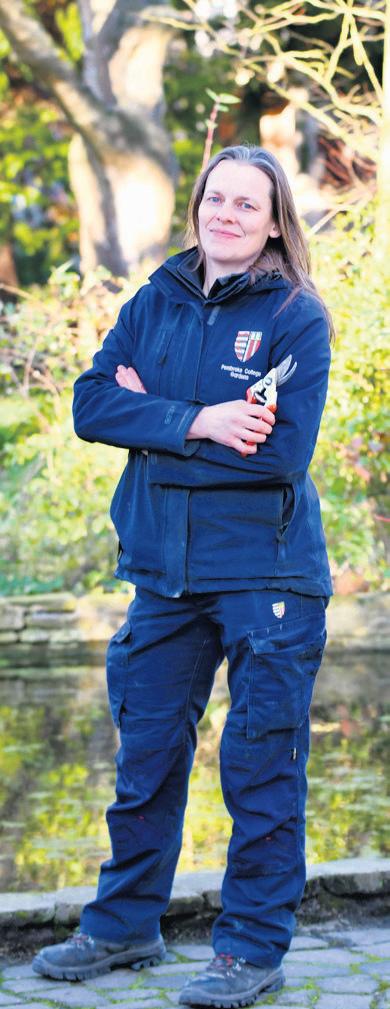

Walking through the bustling streets of Cambridge, where bikes weave around buses and crowds of tourists over ow the pavements, I can nd myself craving the peace and quiet of the countryside. en I turn right, opening the door to Porters’ Lodge to nd myself in a green oasis, right in the heart of the city. Both tourist hotspot and student back garden, college gardens boast features from King’s wild ower meadow to Christ’s 200-year-old Wisteria. But such carefully crafted gardens require constant thought, grind, and upkeep.
It’s 7:30 am, and Pembroke’s gardens team are up and hard at work, long before most students’ alarms. True to my humanities degree, I’m up at the more civilised hour of 9am, to meet Head Gardener Sarah for a tour of the college’s gardens. For the past four years, Sarah has led the six-person team, taking over from the previous head gardener’s legacy of over 50 years. She reminisces fondly on her career, which began in Trinity Hall, before she became Deputy Head Gardener at Trinity. After 21 years, “I still love coming to work,”says Sarah. She continues, “I didn’t go to university. It wasn’t for me, and I’m glad I made that decision for myself.” When asked how her experience of gardening di ered in each college, she contrasts the extraordinary vastness of Trinity, which “you just can’t even get your head around, with the seven acres of Pembroke. e scale is something
which “you can really put your mark on.”
❝e Master’s Garden has been transformed into a welcoming space
From taking over a tired garden surviving on minimal maintenance during the COVID-19 pandemic, Sarah has really left her mark. e Master’s Garden has been transformed into a welcoming space, thanks to Sarah's hard landscaping and a conscious e ort to open up the garden. e brand new Dolby Quarter o ers an exciting opportunity to expand Pembroke’s gardens in a space designed by landscape architect Tom Stuart-Smith. Walking through the three courts, you are greeted by swayinggrasses, shrubs and the rare and exotic plants like the Catalpa, Holboellia brachyandra and Bupleurum fruiticosum in Chui Court. Blyth Court is dominated by six mature pollarded Lime trees, and the nal Ray and Dagmar Dolby Court’s accommodation surrounds a sunken bowling green-style lawn, further enclosed by a vibrant variety of perennials, shrubs, and climbers.
Back in the main college site, Sarah gestures to a wall created by dead hedge and sticks, a feature designed to pro-
Making,Designing,Prototyping& CreatingintheCentreofCambridge


MakespaceisCambridge'scommunityworkshop,opentoall.Locatednear Cambridge'scitycentre,weprovideaccesstoequipmentlikesewingand embroiderymachines,3Dprinters,lasercutters,woodworkingand metalworkingtools,CNCrouters,microscopes,andmuchmore.Whether you'reanartist,maker,engineer,orjustcurious,Makespaceofferstools, resources,andacollaborativeenvironmenttohelpyouexplore,learn,and create.Wecurrentlyhaveover500activememberswithanalumni networkofover1600.Ourmembersincludeengineers,scientists,artists, entrepreneurs,students,educators,developers,woodworkers, metalworkers,costumedesigners,roboticists,guitar-builders,andmany manymore!
● Accessto3Dprinters,lasercutters,electronics,andmore!
● Workshopsforallskilllevels.
● 24/7accesstothespaceformembers.
● AlllocatedinthecentreofCambridge
● Joinacommunityofcreators,engineers,artists,andenthusiasts.
Signuptodayforatourto seeMakespaceinaction!


vide shelter for insects and mammals. Pembroke’s gardens are aiming for a sustainable, environmentally sensitive approach. e gardens in this way can act as “green corridors through the city where wildlife can thrive and spread. As Sarah clari es, “it’s about the right plants for the right place.” is sounds simple, but actually requires a complicated process of planning seasons way in advance, leaving plants uncut for the winter, perennial planting, and planting evergreens.
Alongside practical changes, there is a lot of creative license to really make the gardens special. Sarah tells me that they, “just want to put little ‘Easter eggs’, so to speak, for horticulturists all over the garden, and for everyone else, things that feel restful, great for wildlife, and beautiful at the same time.” e gardens surrounding Red Buildings will re ect its architecture, with red tulips, the red foliage of aces, and a Cambridgeshire red apple tree highlighting its signature colour. Pointing out a plant I’ve sat next to on many occasions, Sarah reveals that it is a pineapple guava, tasting like kiwi, banana, and pineapple, with a guava texture. “Lots of people say that one thing about this garden is that you walk around a corner and see something you didn’t expect.”
As well as being works of art, the college grounds are a home to students, a place where you can wander around in pajamas and slippers or grab a co ee
with friends on the lawns. Sarah recognises the importance of maintaining this sense of home by “opening up as many lawns as we can.” Moments like seeing a washing airer out on the lawn, someone playing guitar on the grass, and board games enjoyed in the sun are special moments where students infuse the gardens with life. ere are many ways students can interact with the gardens as well, like the plant-sitting scheme, which saw around 100 plants left in the team’s care over the summer. ere is also a herb garden which students can freely help themselves to. Sarah nds students have a great respect for the gardens, “they love the gardens here and it’s always written into the plans for the May Ball about how they must respect the gardens”.
Pembroke's gardens are aiming for a sustainable, environmentally sensitive approach
e gardeners here keep Cambridge’s beauty alive. Sarah sums it up beautifully: “Pembroke has a green heart. All the buildings are around the outside, and everything in the centre is green. And I think that's so lovely.”

From knowing what jobs are out there to advice and guidance through the hiring process, we work with



The Oxford English Dictionary de nes a ‘con ict of interest’ as: “A situation in which an individual may pro t personally from decisions made in his or her o cial capacity.”
If you haven’t heard about it already, James Orr, Associate Professor of Philosophy of Religion at the Faculty of Divinity, was appointed as a senior adviser to Nigel Farage. E ectively, his job will be “talent” acquisition for the party, aiming to build a network of elite defectors from other parties, as well as within academia, business, and law. He’s even had his eye on “hundreds” of Cambridge students that “he thinks would make suitable allies, ” in his role teaching ve undergraduate papers, MPhil Course Director for Philosophy of Religion, and as PhD supervisor.






If this is not a con ict of interest, I don’t know what is. It should be the right of each individual student to come to form political

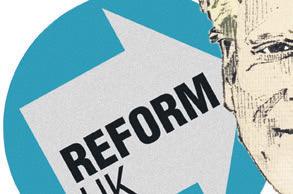
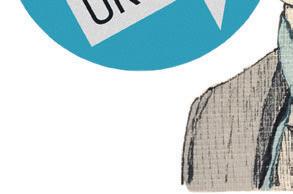

views through an educated and unbiased presentation of the facts. Orr’s position of in uence, as well as his public statements proposing to recruit Cambridge students, are testament to a violation of the student-teacher relationship and he cannot, as an anonymous member of the Divinity faculty stated two years ago, in good faith uphold “the standards expected of an academic at a public university”. e sheer quantity of issues surrounding this appointment boggles me. He has been put on record as using his in uential position in one of the most prestigious universities in the world to recruit young people to his extreme side of politics, characterised by strict anti-abortion views under any circumstance, including rape and incest, calling immigrants ‘invaders’ , and being best friends with US vicepresident, J.D. Vance. The University needs to understand their responsibility in instances like these. If you were to look up James Orr online, the rst sentence in nearly every article and biography about him is that he is a Cambridge professor.



















The University has dealt with
❝ Orr shouldn't be allowed to pro t o the back of the Faculty and the University
similar situations before. Nathan Cofnas, a former Emmanuel professor, left after claiming that race was directly linked to intelligence, and Noah Carl, a researcher, was dismissed from his position because they understood that “there was a serious risk that Dr Carl’s appointment could lead, directly or indirectly, to the college being used as a platform to promote views that could incite racial or religious hatred”. Being placed alongside the Cambridge name brings legitimacy not only to Orr’s views, but also those of Reform UK. People might disagree, citing a slippery slope or association fallacies, but fundamentally he is using his position to publicly validate and promote extreme views, and Orr should not be allowed to pro t o the back of a Faculty and a university that prides itself on inclusivity, diversity, and academic excellence.
Of course, the obvious rebuttal to my argument comes from the University Code of Practice on Freedom of Speech, which encourages “sta , students and visitors to engage in robust, challenging, evidencebased and civil debate as a core part of academic enquiry […] even if they nd the viewpoints expressed to be disagreeable, unwelcome or distasteful”. Incidentally, this is the same Code of Practice that cleared Cofnas, accused of “abhorrent racism,” of any wrongdoing, and which came to the conclusion that his work did not amount to discrimination or harassment. Cofnas tried to defend his claims, that “under a true meritocracy, black people would disappear from almost all high-pro le positions outside of sports and entertainment,” under the guise of academic study.
Orr, when he condemned pro-Palestine
demonstrators two years ago by saying “Import the Arab World, become the Arab World,” does not even try to hide his prejudices under the protection of academic free speech. If this was said by anyone other than a Cambridge professor, educated at Winchester College and Balliol College, Oxford, it would be condemned for the bigotry that it is. Instead, students are forced to stand by, despite protestations, as gures like Orr garner larger and more in uential platforms.
So what can we do as students? Obviously, silencing views we do not agree with will render us guilty of the “cancel culture” restorm that Reform UK, described by Orr himself as the ‘party of second chances’, are so obsessed with. We would simply be complicit in reinforcing the stereotype of free speech being unfairly persecuted by left-wing politics which gives such individuals so much ammunition in the rst place. However, we should not stand by and let this be associated with this university, this deliberate movement away from decent human empathy and towards divisiveness and hate. e faculty, and the university itself, have a responsibility to its students to ensure that the people they employ, whilst they may have controversial views, are not allowed to have these views in uence their decisions as a consequence of their being in a position of authority. I nd it hard to believe that James Orr, public recruiter for Reform UK, will not allow himself to be tempted into abusing his position and action should be taken to prevent this abuse before it has a chance to take root.
When was the last time you gave someone the bene t of the doubt?
Perhaps in posing this rather pointed rhetorical question, I have exposed my own hypocrisy. I’ve certainly spent too much of my time at Cambridge blinded by the idea that, being surrounded by people who seem to have everything going for them, giving them the bene t of the doubt when I didn’t like the way they acted would make me a gullible idiot.
It’s not just a Cambridge problem. Our generation discusses our thoughts and our lifestyles through a language of the self. We muse on self-love, self-care, self-discovery, concepts which, at risk of sounding like a self-loathing riddled contrarian, I have always found somewhat opaque. Achieving the elusive condition of self-love, for example, seems to demand a kind of epiphany, in which a great deal of thinking about yourself leads to a sort of mystic revelation.
Social media obviously contributes. What mode of relaxation is more accessible than that which lls our downtime with other people’s self-mythologies, making us equal parts resent the poster for the perfection they are projecting, and, perhaps more dangerously, believe that we really do know them? But it’s not just our phones; it’s our culture more generally. I love confessional pop songs as much as (probably more than) the next emotional young woman. But once you nd yourself dethroning Taylor
Swift’s e Tortured Poets Department from its year-long reign as your moststreamed album through a desperate compilation of Britain’s most loved hymns and the most mindless club classics of the 2010s because you just can’t stand thinking about being personally wronged anymore, you realise that some self-evaluation is in order. Because as gratifying as it is when the media we consume is ‘relatable’, perhaps being able to relate everything to ourselves should not be the aspiration. What we’ve lost, I think, is a desire to empathise. In fairness, in the bubble of university, and perhaps in the modern world more generally, it’s hard not to view yourself as an embattled protagonist. In traditional communities, where people knew each other for the course of their lives, it was impossible not to become invested in other people’s stories in one way or another. I certainly don’t want to romanticise this. I’m aware of the more lurid, and judgemental, aspects of locality, and would much prefer that the gossip that surrounds me is about who’s dating who, or whose doing particularly well academically, than whose getting divorced, and whose dying. But I do think there’s something to be said for watching people’s lives unfold as lives really do, with all the requisite messiness, which has been lost through the anonymity and transience of many modern lives.
Add the pressures of Cambridge,
❝ Ultimately, we really just don't know what's going on in someone else's life
an environment where we are literally ranked against our peers once a year, and this introspection becomes not only a bit blinkered, but rather belligerent. ere’s a sense that we need to promote ourselves; by having the cleverest answer in a supervision, the best LinkedIn, the most friends. And because we’re good at promoting ourselves, we shoot ourselves in the foot. Our facades of polish are so impermeable that they utterly shroud our humanity. Giving someone who is characterised as intelligent, and rich, and popular the bene t of the doubt when they act out, empathising with those who seem to be beating us at this unspoken competition, feels really quite foolish. But the thing is, the experiences where











just don’t know what’s going on in someone else’s life.
Where our xation on the self is centred around arti ce, however, there’s a naturalness to forgiveness, and giving people grace. In our shared time and place, there’s a connotation of weakness assigned to it. But I think, in actual fact, feeling better about yourself tends to come from thinking more about others. Read a newspaper article, a cheesy novel, a bad poem; it doesn’t have to be War and Peace. Watch a movie, or a history documentary, or phone your grandparents. Do anything that takes you out of the small, introspective world we all inhabit, if only for an hour. Try to empathise, rather than relate. And if foolishness is the cost of giving people the bene t of the doubt at Cambridge, behave idiotically. You may never know when it’s the most discerning thing you could




empathy is most needed: death, heartbreak, misfortune; don’t care how privileged or successful you are. e vicious pairing of the false familiarity of social media, and a focus on ourselves, however, leads us to forget that, ultimately, we really
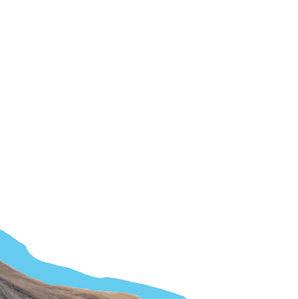
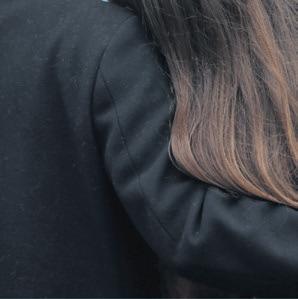
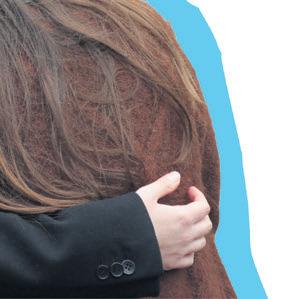






In the last three years, Cambridge have dominated Oxford in the Boat Race. Including the often overlooked lightweight and reserve races (the only boats that should be seeking airtime), CUBC have won 17 out of the last 18 races. As I watched Cambridge complete its third recent clean sweep last April from Putney on the banks of the Tideway, I couldn’t help almost feeling sorry for Oxford.
Now, I am certainly no fan of losing – I may even mutter “God Damn Bloody Oxford” in my sleep – but it crossed my mind that the most recent boat races did not even feel like a competition. is is not to say that the exceptional student athletes from both clubs didn’t have to work hard, dedicating themselves from September till April and enduring countless early mornings and 5k tests (more any sane person would wish). eir fortitude is remarkable: few people can commit so completely to their sport.
But at present, Cambridge is on a completely di erent level to Oxford. e recent GB Men’s “Cambridge Four” illustrates this perfectly: at the 2025 World Rowing Championships in Shang-



❝ I couldn't help almost feeling sorry for Oxford
hai, James Robson, George Bourne and Douwe De Graaf, who all recently won the 2025 Boat Race, fought o international crews to claim Gold. e quality of rowers that Cambridge produces is incredible – and I must credit Rob Baker and his team of coaches for this.
But both James and George were studying here in Cambridge for an MBA – a curious degree choice for two people who have both rowed for GB in the past, and continue to do so today. Several other blue boat rowers from both Oxford and Cambridge also share international experience, but it seems that only CUBC can attract international talent and produce international winners.
I can only imagine how OUBC must be feeling: a new year, a new squad, and a new chance to turn things around. ey may feel that the odds are stacked against them – losing streaks are hard to break, but for Cambridge to ‘take it easy’ one year would not provide the satisfaction or statement of strength that Oxford seeks. e rules of the Boat Race are imposed upon, yet controlled equally by, both clubs; discussions of whether the Rankov or Cracknell rules
are fair or not will likely continue forever on both Rowbridge and OxRow, for only the most committed college rowers to care about.
Perhaps the success of Cambridge can be put simply down to a less temperamental river. Since moving to Ely boathouse in 2017, Cambridge have won 41 out of 49 races – a staggering increase from the 17 out of 42 in the seven years prior. e River Great Ouse, by its very design, cannot ood. Oxford can only dream of such stability, su ering from prolonged periods of ooding in recent years, which washes away any hope of winning. But can the oods really be blamed? Oxford Brookes, who continue to dominate the UK club and university rowing scene, train on the same stretch of the ames near Wallingford – yet they show no signs of su ering.
e recent Head of the Charles in Boston may have o ered the dark blues some well needed hope. While the Cambridge men stormed to another stunning win, the Oxford women claimed 3rd place – beaten only by the US National Team and Molesley Boat Club. Crucially, they nished 22 seconds ahead of Cam-
bridge – a signi cant margin, especially so early in the season. e Cambridge Women should watch out – only 19 seconds separated the CUBC & OUBC Men at Head of the Charles in 2024 – and we all remember the domination that followed. So will the Boat Race lose its appeal if it loses this element of competition? With its recent move from BBC1 to Channel 4 (First GBBO, and now the pinnacle of GDBO…), it will be interesting to see how many people still tune in to watch it. Millions normally watch from home and hundreds of thousands watch from the banks of the ames. Are they there to witness elite-tier rowing full of competition? Or simply to drink an inordinate – yet somehow socially acceptable – amount of Pimm’s?
As actor and ex-Blues rower Hugh Laurie puts it, “ ere’s nothing quite like winning a rowing race” – and in case you question where my loyalties lie, I hope that Cambridge continue to win for many more years. Dominance may be a thrill, but only the enduring contest between equals will keep the Boat Race a joy for years to come.


For a university full of the world’s brightest minds, we’re all pretty useless. We don’t cook. We barely clean. Mention Henry Hoover and I wouldn’t be surprised if someone’s rst thought is “Oh, isn’t he a Blue for ruggers?” rather than the annoyingly useless vacuum. Seriously, is that thing ever not broken?
Cambridge has a culture of over-reliance. We outsource everything that isn’t studying (let’s gloss over AI for now…) to someone else: our food, the state of our facilities, our laundry. Looking at you, Emma. is, in many ways, is an immeasurable help – we save so much time not having to do these mundane household tasks that we can crack on with our studies. Because, yes, we are all going to start a new school of thought if we don’t put the bins out ourselves. Jokes aside, I do not disregard the value of being provided for by college. Cooking takes forever: you prep for a good half hour (or more), scran it in two minutes (or less), and then are faced with a never-ending pile of washing up. Why do that when you can go to hall, be served a lovely hot meal and then leave your plate to be cleaned? Not a nger lifted but to grab the tongs to ll your plate. Within the hour you can be back in the library nishing that supo essay in far less of a rush than if we had to do it all ourselves. Convenience is key, right? Wrong. e key thing I have taken away from all this is that some Cambridge students are painfully lazy. And painfully unprepared for the real world. When you land that JP Morgan grad offer, or get scouted by HSBC, or conveniently get hired by your dad, you will actually have to leave Cambridge. You will have to live by yourself. You will have to (shock horror) wipe down a surface. No, there will not be a magical fairy who comes into your at and does a lovely spring clean while you’re out. No, your clothes will not magically wash, dry and fold themselves. Tragically, all of this will
❝ Some Cambridge students are painfully lazy. And painfully unprepared for the real world
be your job.
ere’s no harm in the help from college, I understand that. But university is the perfect time to learn the skills required to be a functioning adult, not just an intellectual. is is why I’m such an advocate for living o -site for at least one year of your degree. Living in college means you’re unlikely to have the facilities needed to cook properly beyond a sad pesto pasta, but living o -site gives you a slither of reality: this is a space that you are entirely responsible for. You are fully equipped to cook for yourself, you have to keep this communal space tidy and you have to separate your own rubbish from the recycling, general waste and food bin AND empty it yourself (and, dear God, please do, those things can get grim).
perpetrators will not heed my warning; if you have seven maids and a cinema in your house now, it’s unlikely that in two years time you’ll be worrying about washing up the chilli con carne you made at 9pm last night after a gruelling shift. But even if your life between home and Cambridge doesn’t change all that much, be a decent person and clean your hair out of the sink. ere’s no class in carelessness.













Cambridge teaches us so many valuable skills. How to produce high quality content in a crazily short period of time. How to solve insanely complicated problems. Hell, it even sets us up with the tools to maybe go about xing this doomed world. But this seems to be operating on a give and take basis. Yes, we might be a very clever bunch and, yes, what we study is important, but this shouldn’t result in the sacri ce of learning how to do simple household tasks. Cooking is a skill. Cleaning is a skill. Getting your tted sheet to actually stay over your mattress is a skill.








I know that many of you reading this will be competent, clean, considerate adults. You don’t need a lecture about putting your dirty dishes away or a step by step guide on how to mop. But when I met the bedder of my staircase (the loveliest man ever) this year and was met with what can only be described as an introductory talk into what he will and will not do it was safe to say alarm bells started ringing. What has this man seen? What has he been subjected to? When lines start being drawn before you’ve even put your glasses in the cupboard, you know a less-than-courteous culture has established itself.

When you enter the big, scary real world where formal hall means nothing and ‘Crushbridge’ is met with concerned raised brows and questions

about infrastructure planning, this convenient household hand-holding you’re used to will become a hindrance. If you leave your residual rubbish all around the communal kitchen in your workplace, no one will sel essly be there to tidy it all away for you. at behaviour is the furthest thing away from professionalism, but it’s so normalised here that I worry some people won’t grasp it until they’re o ce enemy number one. I think a little bit more of personal responsibility would do us all some good. I’m not calling for the end of college catering or getting rid of bedders: these are people’s jobs and they’re important to them as well as us. But, I think if we all just did a bit more, relied more on ourselves rather than just thoughtlessly ofoading it onto others, it would improve our own competency. I don’t want to see another person put raw mince meat in the microwave again. Hoovering our own rooms and replacing our own toilet rolls are simple things, but they are a start to show us how the world outside of Cambridge really works.



Not only does this over-reliance lead to disgustingly bad manners (the amount of people who don’t know their bedder’s name or even o er them a greeting in the morning is genuinely appalling), it also means that many students leave Cambridge with a rst-class degree and an immunity to Cillit Bang. Now I understand that the privileged will always remain privileged. Posh

















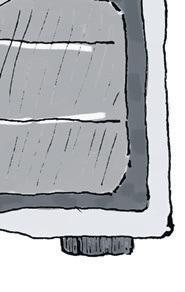


Sharing a building with Varsity, the University’s Centre for the Study of Existential Risk (CSER) has a name that evokes Cold War anxieties at odds with its bucolic surrounds on Mill Lane. e grazing cattle on Laundress Green are likely unaware that, metres away, a multi-disciplinary team of academics and policymakers is at work confronting the gravest questions ever posed to humankind: what are the potential consequences if the worstcase scenarios of climate models come to pass? What are the risks associated with the seemingly inexorable march of arti cial intelligence?
until they cause catastrophe. is was illustrated all too well in the COVID-19 pandemic.
A July event at the CSER focused on a risk receiving increasing attention, namely the future possibility of articial ‘mirrored life’. Many of the molecules that make up life on earth, like proteins and sugars, have a handedness, or chirality. is means that theoretically there exist mirror image versions of these molecules, called enantiomers, that have the same chemical formula as their counterparts, but may interact di erently with other chiral molecules.






e CSER has a broad remit to study the systemic risks facing the globe. e range of academic and professional backgrounds of its members is a feature meant to help the centre grapple with risks that do not take place in a vacuum, but rather as challenges within a web of interacting systems that underpin civilisation.
e proteins produced in an organism’s cells normally have a chirality that by convention is called left-handed.




by life with a compatible handedness. A hypothetical mirror-organism may not face any of the naturally inhibiting pressures that organisms sharing our chirality face. For example, there is little understanding of how our immune systems might react in the presence of such organisms.




❝

of the topics he touched on in the talk was the increasing threat of a synthetic pandemic. Technological advancstreamlining and reducing the costs of the processes by which researchers can synthesise live viruses.










In the nearfuture this may enable a rogue individual to create a dangerous pathogen almost






ere are some profound risks that we are reminded of easily, thanks to an abnormal heatwave, or the unavoidable AIgenerated slop ooding our feeds. Some risks though, those that originate from the microscopic realm, lurk insidiously

e reason that life ended up preferring one such handedness over the other is still debated. Any possible advantage of one choice over the other is thought to be subtle at the level of atomic physics, and there is nothing to preclude the existence of a form of life that is, in a sense, the precise mirror image of ours.
Actively thinking about the ways in which such disasters might be averted

However dire that sounds, it was somewhat comforting to observe in uential minds, including Professor Martin Rees, in discussions about such dangers at the CSER. Indeed, Chyba himself is not promoting fatalism but actively thinking about the ways in which such disasters might be averted.




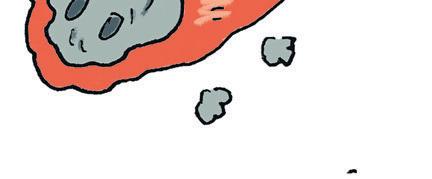
Why could this mirrored life pose such a risk? All forms of life have evolved over billions of years to ll evolutionary niches in complex ecosystems inhabited
A technical report published last year predicted possible mass extinction that the arrival of mirrored life could bring about. Among the thirty authors were scientists previously awarded a grant with the objective to “design, construct, and safely deploy synthetic mirror cells”. More immediate biological risks are already on the radar of the CSER. In 2023, I sat in on a seminar at the centre delivered by Christopher Chyba, Professor of Astrophysical Sciences at Princeton. One
In a 2012 article he and Ali Nouri explain that while increasingly automated genetic synthesis technology may make engineering a pandemic easier, automation also provides opportunities for oversight and safeguards to be implemented. If any of this has made you pessimistic, it is perhaps best to ip the logic on its head: the bright minds of Cambridge and beyond are collaborating to stave o extinction more than you might have known.
Lucy George breaks down the biology behind our response to spiders and horror lms
Iam terri ed of spiders. And I’m not alone in this: almost half of the UK’s young adults su er from arachnophobia, or are at least moderately scared of spiders. Whether it is clowns, heights, or enclosed spaces, almost everybody is afraid of something. But why, and how, do we experience fear? And why do we actively seek out this feeling, particularly during Halloween, by watching horror lms purposefully designed to make us afraid?
Fear serves an important purpose. When faced with a potentially lifethreatening situation – for example, encountering a grizzly bear – a brain region known as the amygdala is activated. is generates the body’s ‘ ght-or- ight’ response, causing a rapid increase in heart rate, blood pressure, and adrenaline levels. is prepares us to defend ourselves against danger by diverting blood ow to our heart and muscles, enabling us to either confront or escape the cause of our distress.
While a bear encounter may understandably evoke our fear response, many phobias are unrelated to any signi cant risk of danger. It seems like irrational fear can develop for just about anything, including speci c foods, words, celebrities, or even Halloween itself (known as samhainophobia). It’s thought that these phobias often stem from an unpleasant past experience through what’s known as ‘fear conditioning’: learning to associate something harmless with a negative outcome, similar to how dogs became conditioned to drool at the sound of a bell when expecting treats in Pavlov’s
famous experiments. Fear conditioning leads to greater amygdala activation when facing the same stimulus in the future, creating an intense, emotional fear response to things that pose no threat.
A recent survey revealed that 91% of Generation Z consumed horror lms or TV shows in 2024, with over a quarter of respondents purposefully watching this genre to elicit the feeling of fear. If fear evolved to protect us from danger, then why do we intentionally seek it out by watching scary movies? Horror lms can trigger the same adrenaline rush as coming face to face with a predator: heightened senses, rapid breathing, and a pounding heartbeat all contribute to the immersive experience that many people nd invigorating. Stephen King’s It (2017) – the highest-grossing horror
movie of all time – has its fair share of
heart-stopping moments, with a grand total of 23 jump scares to exhilarate viewers with a surge of adrenaline.
After the intensity of a frightening horror lm like It, making it to the end can feel incredibly rewarding, both mentally and physically. Known as the body’s natural painkillers, endorphins are chemicals released by the brain when we experience fear and stress, or when we take part in pleasurable activities such as eating nutritious food. ese feelgood chemicals may be another reason why we nd horror so compelling, and why many people can’t stay away from horror movies, for the same reason we keep returning to our favourite foods and restaurants.
Di erences in personality may help to explain why horror is so divisive. Studies have shown that people regarded as


▼JordanInglis
‘sensation-seekers’, with a strong desire to take part in new, exciting experiences, are more likely to enjoy the emotional and physical response evoked by horror lms. ese people also tend to show higher levels of morbid curiosity, de ned as a particular interest in topics such as death and the paranormal. In contrast, individuals with higher empathy are thought to enjoy horror movies less, providing one potential explanation as to why not everybody can stomach this genre.
❝ ese bodily changes prepare us to defend ourselves against danger
Regardless of our opinion on horror, we can all be thankful for the remarkable survival mechanisms that have evolved to protect us from perceived danger –whether this is in the form of bears, spiders, or killer clowns. So, the next time you get frightened at the sight of a spider, or shocked by a horror movie jump scare, take a moment to be grateful for your fear response.




Laura Verdina covers the latest scienti c research
A study led by a Cambridge researcher found that di erent species of birds show consistent di erences in levels of neophobia (the fear of new things). e group used a large-scale collaborative open science framework called ManyBirds Project, which brings together data from researchers across the world. e prior assumption was that birds vary their aversion to new objects according to the environment they nd themselves in, and neophobia was not related to their evolutionary history. To test this, researchers observed the tendency for a bird to touch food either in the presence or absence of an unfamiliar object. Consistent di erences were found between individuals, species, and all other taxonomic levels. is would suggest that some birds are naturally more fearful than others, regardless of their environment. Following this result, the team then went on to investigate whether ecological factors like diet and habitat could explain the di erences between birds. Overall, the study found birds with a restricted diet who are migratory and live in areas with a low variety of habitats showed higher levels of neophobia. is supports two preexisting evolutionary hypotheses: the Neophobia reshold Hypothesis, and the Dangerous Niche Hypothesis. e former states that species with specialised diets will be more neophobic, while the latter states that levels of neophobia would increase in dangerous habitats. ese ndings shed light on the evolutionary causes for neophobic behaviour.
Scientists from the Gurdon Institute have produced a model which can mimic how human embryos produce blood, enabling them to create human blood cells as well as blood stem cells (hematopoietic stem cells).
‘Hematoids’ are embryo-like structures which can be grown in a lab over a couple of weeks, using human stem cells created from any cell in the body. e blood cells they produce could be used in therapies for blood-related diseases.
ough other methods exist for generating hematopoietic stem cells, this is the rst model that is self-organising and does not require excessive amounts of extra proteins to sustain its growth. One author of the study stated that the use of this new model “o ers potential medical advances to screen drugs, study early blood and immune development, and model blood disorders”.
As these hematoids are grown from human stem cells, they can be produced from any cell in a patient’s body. is means any blood or stem cells produced would be fully compatible with the patient’s body and wouldn’t be rejected by the patient’s immune system.



1 Low digits (4)
3 Hallowed pit going endlessly into the unknown (4)
6 Slow fast (4)
8 Gruel harbouring regret (3)
10 French letter dead and buried (6)
13 Perhaps initial expression of disgust at seating option (3)
15 With outs, the details (3)
17 Retreat back into idiot ’s place of execution (6)
20 Hiding universal sense of ‘other ’ turning is a possible charge when not Ubering after the bar (1,1,1)
21 Motor sport of Tuvalu on camera (1,1,1,1)
23 Run out tiny sh? Slayyyy (4)
24 In 2016, roasted headless frog (3)
25 Games console – both-handed – with lmless camera (1,1,1,1)
26 Flash rear (4)
27 It makes cars go in Chicago Illinois (3)
28 Unfashionable excuse (3)
29 Glob expands around piece of brain (4)
30 A trick tonight, but a treat after 6A (3)
31 Decapitate and mangle fools in city (4)
33 Be quiet, robot, god … (4)
35 Garment cut back to accommodate nickel (5)
37 Beseech alien father (5)
38 Game ’s over – some are mi ed at this, initially (5)
40 Solutions to unknown ailment from the East (5)
42 Leaving hotel, they return nevertheless (3)
44 is amount of land is for many (3)
45 Run like a malefactor, primarily (3)
46 Bound to desire with no resolution (3)
47 Adam West ’s rst entry into Marvel (3)
48 Emphasise mental health issue (6)
49 Leaders of ve European nations in marsh (3)
50 Why one might bring a fabric back to the house to remain comfortable? (2,4,2,4)
1 Terror act, with suspicious kit, deles this kids’ activity (5,2,5)
2 Hang philosopher who’s not all there (3)
4 Gate to surgical theatre (2)
5 A city (2)
6 Permit the French to do away with Oscars (3)
7 Programme broadcasting from eight ‘til now, about the unknown (8,4)
9 Slimy old man you oust for activity (8)
11 Most of gall oil gurgitating from Italian horror (6)
12 Dismisses breaking stove across exorcist’s head (6)
14 Maybe obituaries, full of love, cruelly guile the Spanish (8)
16 Standard risk of clubbing (1,1,1)
18 Instrument exchange hides neverending omen (9)
19 Consuming litre of alcohol after crash may dumfound (9)
20 Decapitating god makes a racket (3)
22 Against some Cognac (1,1)
23 Facing up, accept defeat (1,1)
32 Catch tin and silver (4)
34 Eager to impale scumbag ogre (4)
36 React badly to French menu (5)
37 Creepy guy giving everyone his number (5)
39 Mothers in never-ending church service (3)
41 Kind of average premise; not at all odd (1,1,1)
43 Figure also on radio (3)
46 Two males at bottom of trouser leg (3)
▼ Iris Chapman


Varsity's resident archivist Giulia Reche-Danese explores the precursors to the anonymous confessions page
Normal sudoku rules apply. Cells within a chess knight's move of each other cannot contain the same digit. Cells within a cage must sum to the number clued in the top left corner of the cage.
Solution

ACROSS
1 Silver snake in a state of shock (5)
6 Bots overturning record held for print photography (5)
7 Section cycling having had haircut (5)
8 Decree to expel not ve, but ve hundred (5)
9 Big name in court, whichever side you take (5)
DOWN
1 Trees’ remains (5)
2 Crumbling edge covers ordinary nodule (5)
3 Trouble surrounding reputation, a time begun by fools (5)
4 Considering one which may damn you before church (5)
5 Deteriorated spats from times gone by (5)
1 Which 5 chemical elements’ symbols spell the word Atlantic?
2 Which US state has the state code AK, and what is its capital city?
3 Of Henry VIII’s six wives, which had the shortest marriage to him, and how long did it last?
4 What do Frida Kahlo, Long John Silver, Luke Skywalker, and Venus de Milo have in common?
5 In which European city would you nd the Charles Bridge?
Camfess, the anonymous Facebook confession page, has made a name for itself in deadline procrastination. Many in uencers base their platforms around teaching their viewers how to study “like a Cambridge student,” but they all seem to overlook this staple of dayto-day student life. It’s also a crucial space for any Cambridge student, a vortex into which we shout out our preoccupations, and a platform for both debate and advice. Taking a scroll through Camfess reveals everything from our primary sources of worry and the general political climate to students’ sense of humour. Before the dawn of the internet, students could nd all this and more the letters segment Varsity. e parallel between the two is quite striking, and even highlight instances of ADC drama (pun unintended), like this hot take from the April 2001 issue: “Reviews which are merely based on subjective ‘bitching’ rather than objective reviewing do not contribute to the arts.”
You can also nd students heroically speaking up about the most pressing matters in the name of the Cambridge community, like one outraged English student who wondered: “Does anyone else see this subsidy to the mathmos as unfounded and indefensible?” A bit of context: he was extremely concerned by the UL scones being 50p more expensive than the Maths Library ones.
A personal favourite of mine is the debaucle caused by an article titled “Mapped out,” which made the front page of the January 2004 issue. In a letter titled ‘Geographers throw their crayons about’, an angry group of rst year geographers claimed to have been falsely labeled a “minority subject” and that the “implication that Geography revolves around colouring in maps” was “an insult to their intelligence”. In the following issue, another letter urged geographers to “GET A GRIP PEOPLE” and “wise up and stop whinging,” a messaged he delivered through a metaphorical “nice big crayola marker”. If this debate doesn’t sound straight out of Camfess, I don’t know what does.
Having the arguments we’re having on Camfess in a newspaper forced people to take accountability for their stance. It stopped them from hiding behind anonymity instead of owning up to or thinking longer before submitting their questionable takes.
Perhaps the pompous writing in the letters makes them a little easier to di erentiate, but the content mostly remains the same. Whatever the format, public complaints seem to paint the most accurate picture of what our university experience is like. Hence why the following mantra from November 2000 still rings true: “When writing letters to Varsity can you ask yourself. Am I making this up? Did it really happen?”

Bates has her chakras checked, so you don't have to
I’ve always felt tentatively receptive to what some might term ‘hippy shit’. From mediums to meditation retreats, I gure there’s no harm in giving these things a go. What I may lack in a clearly-de ned system of spiritual belief, I reckon I make up for in whimsy, and a general appreciation for the idea of being spiritual. Growing up, I fawned over natal chart readings, hoarded ‘lucky’ knick knacks, and stuck ‘tarot deck’ at the top of my Christmas list. at is to say, I enjoy the aesthetics of spirituality as much as, if not more than, the practice itself: the musk of burning incense, the moonstone around my neck – it’s fun!
I’m also a fraud.




Because, despite my witch-curious ways,

anything I expected to show up in the reading; having just nished Easter term, I said: “Uh, I’m probably pretty stressed?”. us began the healing. I lay back on a massage bed covered with pillows and heated blankets, and Fern encouraged me to shut my eyes as she beat a rhythmic drum. I won’t lie, the experience wasn’t particularly magical. She walked around the room with various noisy objects, creating what felt like an immersive ASMR experience until she started loudly banging a gong. Relaying the experience will be quite di cult, considering I couldn’t see anything, but I’ll give a stab at an auditory translation:



upon its healing medicine”. Unsure of how to take this, I just nodded along; a massive ant in my head, got it.
Nursing a tall glass of water, I listened as she went through each of my chakras, describing in detail what she’d seen there. ere was a mermaid in my solar plexus who turned into a “ erce shield maiden” in what sounded like a thrilling demonstration of my divine femininity, and a large boulder blocking a ballroom between my heart and throat. “Speak more, and let your emotions tumble out,” she





I’m not sure I actually believe in all I peddle. e rocks are pretty and my yoga mat well-worn, but I’d be lying if I said I didn’t have my doubts. So, I did what any cynic would do: spent a frankly obscene amount of money on a spiritual healer. At worst, I gured, it’d make a decent piece for Lifestyle. Enter Fern. My mum had been seeing her for what she calls ‘Soul Empowerment Sessions’ for a year or so, initially skeptical but ultimately calmed by the hour-long slots of meditative rest. Whether she could actually peer into chakras remained to be seen, but the whole thing seemed relatively harmless. I’d received a tarot reading from Fern before,
❝

❝





How















It’s Halloween, arguably the scariest time of the year, especially if you’re an introvert with a fear of clowns who just got invited to a clown-themed party (Emily, I love you, but please, I will have a panic attack). Don’t fear, Gabrielle Saraway and Jess Gotterson are here with some top tips on how to pull o the nonchalant mid-party disappearance.




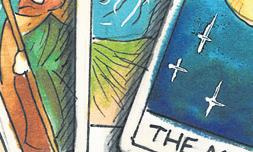








bdm… bdm… TSSSsss… TSSSsss… shakashakashakashaka BANG. BANG. nyeuuoooong… is continued, relatively undisturbed, for an hour. Sometimes she’d lay crystals on my chest, and other times I felt her hands on my head or feet. I think at some point I fell

Try to decorate your space with ant imagery


e classic ghost:
At worst, I gured, it’d be a decent piece for Lifestyle
and had considered it total bull until she (correctly) diagnosed my ca eine intolerance over Zoom. Otherwise, the reading had been pretty vague – friends, lovers, and new ideas galore. I wasn’t convinced. Still, I coughed up the cash, and found myself outside of her house a month later.




advised; I’m not sure anyone who knows me thinks I’m in need of more yapping. Archangel Uriel was hanging around too, and was, she insisted, “giving me back my wings”. If by wings she means a rst in my nal year diss, I’ll take it.

At the end of the session, Fern asked me what I’d seen during the experience. Up until this point, I wasn’t aware that I was meant to be seeing anything – when I’d spoken about it with my mum, she said Fern would do all the talking. Panicking, and afraid I’d be told o for falling asleep, I said the visions had been intense but hazy, and made up some elaborate lie about seeing a horse. Fern, to her credit, looked quite confused by this – from her end, it’d been entirely horseless. Instead, she told me she’d called upon a spirit animal for me, hoping it would help with my burnout (which, she said, appeared to her as a dusty skeleton in my crown chakra). Unfortunately, my spirit animal – whatever it may be – was a noshow, so she summoned a temporary guide the form of a worker ant. “Look out for signs of the worker ant,” Fern told me, “and try to decorate your














Much of her feedback was very complimentary: I have, apparently, the most golden aura she’s seen in anyone besides her grandmother, and am – she was practically buzzing as she said this – a starseed… whatever that means. My god complex su ciently sated (I am the chosen one, I’ll be taking no questions at this time) I went to leave. “WAIT!” said Fern. “You can’t drive for 40 minutes.”

Your rst option would be to just leave. No goodbyes, no fuss, just you embracing the nature of the season and ghosting your friends, gliding out of the door in one swift, painless Irish exit. Worried that it’s rude? Please excuse our bluntness, but no one will notice you. First of all, Halloween is the one time of year where it’s socially acceptable to show up at a stranger’s home dressed as a sexy ladybird, covered in fake blood for extra measure. e room is a sea of red and black polka dots, and you’re just one of them. All anyone will see is one ladybird caught dramatically in the narrow doorway, battling and pleading with her glittery Amazon wings to let her out, but they won’t see you. You are invisible. Secondly, this is a house party. Everyone will be too smashed to care – at least they should be; if they’re not, it’s de nitely a party worth leaving.




space with ant imagery so you can call
After such intense healing (a quite solid nap), it’s apparently incredibly dangerous to take to the wheel. Seeing as Fern charged by the hour, this didn’t help my skepticism. If any of you were worried that this would turn into ‘trial + error: being held hostage by a spiritual healer’, then fear not: falsely encouraging her that I’d go for a long walk, I escaped with relative ease, armed with a prescription of grounding meditations




e matchmake and make a break:


Fern (not her real name, I’m not so cruel) looks exactly how you’d expect a spiritual healer to look, if you’ve ever given it a thought. With colourful hair and a septum ring, Fern works from a garden studio pungent with sage. She o ered me a cuppa, then began screwing the lids o glass jars of herbs to create some kind of elaborate concoction – the tea was pink, and I thoroughly enjoyed it. We discussed my intentions for the session, and she asked if there was


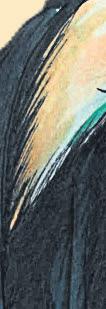










I rang my mum immediately after the session and concluded that, while the experience had been batshit, I’d had quite a nice time. I enjoyed my tea, felt relatively relaxed by the sounds and blankets, and had a sleep so deep it was spiritual. I’m not sure the healing did much to alleviate my doubts, but I came away with a feeling that I’d done something good for my mind and soul. at said, I get the same feeling after a candlelit bath. Would I go again? Unless I win big on the lottery, probably not.
Your second option is less obvious to those unfamiliar with the art of disappearing from a party, but if you learn this trick it works a treat. For this option, you’ll need to actually talk to people, so, if that’s a step too far, pick another option. All you have to do is nd two people at the party who you believe will have great chemistry and then proceed to set them up. Exhibit A: you meet someone called Lindsay. Lindsay speaks French and has an interest in lm photography. en you meet a guy called Pierre who is carrying a camera and complaining about the dim lighting. After talking to both independently, you mention to one: “Oh, have you met Pierre?”. Voila. As soon as the introduction is made, you can then swiftly leave, as their magnetic chemistry will act as an invisibility cloak for your exit. Plus, you’ll have great material for a speech at their destination wedding in Saint-Tropez in ve years’ time.
e
Monster-I-don't-want-to-go-to-Mash:

But if you’re ever in the mood to feel a bit magical (or, more likely, delusional), then there’s no harm in giving it a go – who knows, your very own worker ant might just be a meditation away.


ere will inevitably be calls to go to the club. However, one way to avoid a long night is to cause a dance storm early on. Let’s set the scene: it’s 10pm, someone has nally connected the JBL speaker, and the dance oor is empty. en you step onto the scene, a blur of dazzling movements, leaving nothing left for Mash. Bonus points if you’ve got a projector, Just Dance and/or can do the worm. No one wants to go to the club as a hot, sweaty mess, so wear your best John Travolta costume and dance until everyone is exhausted by 10:30pm. If you cannot dance then I am so sorry, there is nothing I can do for you, nd the kitchen and see if they have any cheese straws. It’s a foolproof plan!
When you arrive as a fresher in Cambridge, it’s only a matter of time before you hear a ghost story or two about your college. It seems like every building here has its own tale of paranormal activity, and this is no surprise: in a city which has such a rich history, it’s only logical that some parts of our past are full of ghosts and ghouls. At rst, we tend to pay these stories little notice; they’re just a bit of fun, something to keep the new arrivals entertained. But as the days get colder and the evenings get darker, it becomes harder to shake the feeling that there are actually ghosts all around us. Even if you’re a sceptic, it’s hard to deny that, when walking through the streets of Cambridge, we’re constantly reminded of those who did so before us.
Since, at the big age of 20, it’s no longer socially acceptable for me to go trick-or-treating, this year I decided I would book myself onto a ‘Creepy Cambridge’ ghost tour. I naturally have to feel suspicious of the whole concept of a walking tour – it’s the pretentious Cambridge student’s worst nightmare to risk being perceived as a tourist in their own city. However, a ghost tour felt like the perfect solution.
I approached Magdalene Bridge for the start of the tour, keeping an eye out for the guide. Part of me was expecting to see a gaunt, pallid gure dressed as a skeleton or the grim reaper, wielding a scythe as opposed to a tour guide ag. So, I have to admit I was a little disappointed when met with a friendly handshake from the very normal, very alive-looking tour guide wrapped up in a winter coat and scarf.
As a lover of all things tacky when it comes to Halloween, I had perhaps got my wires crossed over what kind of ‘spooky’ my evening was going to be. It quickly became clear that if I was looking for cheap thrills, I would have been better o staying at home to watch a slasher.
❝
Watch out for the ghost of a dead don roaming the corridors
Our tour guide started o with a lesson about Cambridge’s gory beginnings, which kicked o in the scariest place in England: Oxford. In 1209, a student ed Oxford upon realising that he had accidentally killed a woman. e murder, alongside growing resentment towards the University’s scholars, caused uproar among the townsfolk, and led to three of the murderer’s fellow students being hanged. Many terri ed scholars decided to leave the city, and ended up settling in the town of Cambridge.
O to a strong start, the Cantabrigians then embarked on a long history of violence and torture, from throwing alleged witches in the river

Cam to having criminals hung, drawn, and quartered on Market Square. Our guide provided a perfect blend of shock value and intellectual stimulation, teaching us all about how the phrase ‘skeleton in your closet’ comes from Clare’s Dr Robert Greene, who insisted in his will that the College display his skeleton in their library alongside his personal collection of books. e College did comply with his wishes, but only for a short while until Dr Greene’s skeleton was put away in a closet, where he disappeared bone-by-bone at the hands of students wanting a souvenir to commemorate their time at Cambridge.

















which three children were unable to escape. It’s rumoured that if the window is closed, the screams of these children can be heard ringing throughout the building, and guests at the pub have reported experiencing a feeling of su ocation. ere is so much superstition surrounding this story that the open window rule is actually written into the pub’s lease!





My personal favourite stop on the tour was e Eagle (not only because we got to stop for a mid-tour pint). We were told a story about a ghost who haunts table four, knocking over the drinks of anyone who upsets him – a convenient tale for anyone who tends to get a bit clumsy after a couple of pints. I was more convinced, however, by the story of a window to the right above the pub garden, which is always open no matter the weather or time of day. Around three hundred years ago, there was a re in the building from


Although I didn’t get to see any real ghosts, ‘Creepy Cambridge’ showed me a side to this historical town which I otherwise might never have discovered. My wish for an evening full of jumpscares was instead met with some spine-tingling stories that will de nitely make me think twice before walking past certain buildings at night. So, next time you hear a bump in the night, watch out for the ghost of a dead don roaming the corridors, searching for his next victim (or try your best to convince yourself it’s just the pipes, but don’t say I didn’t warn you!).

Have you ever been called an emo? Even if you have never adopted the style, I am willing to bet that anyone who was just a little too fond of black eyeliner in high school would recognise that annoyingly familiar heckle – EMO! However slanderously this may have been intended, I nd that emo fashion o ers refreshing presence in every walk of life, but is notably rare on the streets of Cambridge…
Of course, having the word emo shouted at you across a high school corridor had very little to do with the actual subculture, which grew to mainstream popularity (and infamy) during the early 2000s. Emo began as a music genre in the 1980s and 1990s, a descendant of hardcore punk and post-hardcore with an angsty and sensitive twist – emos turned the destructiveness of punk in onto themselves. In the decades which followed, it expanded into a fashion and a lifestyle, most famous for jet-black bangs, eyeliner, band tees, skinny jeans, and androgynous styles. From the outset, it was the genre of the outcast and the misanthrope, and as it became most popular in the 2000s, emo was remarkable for being widely hated by both traditional adults and ‘normie’ teens. For them, there was a ne line between emo simply expressing the inevitable angst of adolescence, and cultivating serious struggles with mental health; the impassioned backlash to the culture was described by e Guardian as an induced “moral panic”.
rounded
subculture became a senseless insult directed at anyone dressed in a vaguely alternative fashion. However, another aspect of emo which is incredibly impressive to me is how they embrace and built their style on a willingness to be genuinely socially excluded. Particularly as a teenager, this means rejecting the desire to y under the radar at the point in adolescence where everyone is most insecure – and judgemental. I have genuine reverence for young people who are able to not only dress alternatively but in fashions which are deliberately unconventional and provocative. Although it may have been some parents’ worst nightmare, I would be rather happy if my child turned 13 and started listening to My Chemical Romance and adopted a rather aggressive side-part.
It is for these reasons that I like to see emo fashion when I’m out. Upon arriving in Cambridge, I was soon distressed to note the apparent and dire lack of emos in comparison to my hometown. is led me to wonder whether there was something about Cambridge which meant that it didn’t attract many people interested in the emo fashion and lifestyle…
However, emo was not only controversial to wider society – even within the subculture there was constant debate over what actually was ‘emo’ and what wasn’t. e high school heckler might not have been able to distinguish an emo from a goth or a scene kid (or anyone who just likes to wear black), but alternative people must also admit that ‘emo’ is an incredibly expansive term, drawing from a whole host of other subcultures, connected in some ways with punk, goth, scene, grunge, indie, and even geek-chic styles. Emo is fascinating because it is one of the last big youth subcultures which is created from fashion, music, attitude, and lifestyle, and simultaneously one of the rst styles to grow to mainstream popularity across the world using the internet. Unapologetically angsty, online and fundamentally modern, yet built on a rich backdrop of music and style, and somehow appealing both to those doing drugs in a eld and those scrolling on the internet all day, emo is the quintessential teen subculture of our modern age.
You may be wondering how such a uniquely well-
It is impossible to know with any certainty, but my hypothesis is that more people here than you’d think are secret ex-emos. It’s true that emo is a style dominated by teenagers, so perhaps it is not surprising that many students no longer align themselves with emo fashion, even if they have a history with it. However, I think that even being an ex-emo, and experiencing important adolescent years from an alternative perspective, can be hugely bene cial to someone’s personal use of fashion. Ex-emos often remain bold and alternative, but let their own unique sense of style grow from their staunch emo roots. Emo is never ever just a phase.
If you are indeed an ex-emo, perhaps you should look more fondly on the time you spent as a ercely alternative teen, as it may be contributing signi cantly to the way you think about fashion today. And, if you want to elevate your fashion and you’ve never had an emo phase, there’s no time like the present…
Fashion Shoot Co-ordinator: Chloe Jacobs
Photographer: Honey Bullion
Illustration: Rosie Beyfus


Flossie Bullion wants to see more emo fashion on the streets of Cambridge











Newnham Grange is a beautiful greybrick house on Silver Street, looking towards the backs. It is now the centre of Darwin College, the rooms upstairs being the Master’s study and Fellow’s combination room, but it was once a family home. Gwen Raverat, the granddaughter of Charles Darwin, writes of this family life in her childhood memoir, PeriodPiece. Like Raymond Mortimer of the Sunday Times: “I have never read a more enjoyable book of childhood memoirs.”
I nd myself feeling that I know Gwen personally, which is a triumph of writing for someone born in the alien world of Victorian England. roughout her life, she railed against the rigidity expectation: Her mother had been an advocate of independence and education for women and was supposedly the rst woman in Cambridge to own a bicycle. Unsurprisingly, the upheaval of social norms was a focus for Gwen as she re ected on the 1890s with the experience of su rage, sexual liberation, and the rock’n’roll of the 1950s. She writes:
“It is still quite dreadful to me to re ect that during at least fty years of my life, Propriety has hardly ever allowed me one of the simplest and most innocent of sensual pleasures: the air blowing on my bare ankles. What a waste of the only life I have!”
With her inimitable wit, she summarises it all: “For nearly seventy years the English middle classes were locked up in a great fortress of unreality and pretence,” and “hadn’t the faintest idea of the real outlook of the poor,” for whom propriety was much less of a burden. ough she felt uncomfortable with some changes, and mourned the loss of the pockets in women’s clothing, she re ects on her youth as one tortured by society:
“of course I wanted, still more than anything in the world, to be a man. en I might be a really good painter. A woman had not much chance of that. I wanted so much to be a boy that I did not dare to think about it at all, for it made me quite desperate to know that it was impossible to be one. If truth must be told, still now, in my dreams at night, I am generally a young man!”
❝
I nd myself feeling that I know Gwen personally
A chapter is dedicated to her ve uncles, the other sons of Charles Darwin, each esoteric, peculiar, and “more adorable than the other”. Uncle William is my favourite. Gwen considered him the most charming, and wrote that she was afraid of writing about him in case she sounded like “Victoria writing about the Prince Consort”. He was the most “unself-conscious”of the uncles, and had worked at a bank in Southampton. After his wife passed, he “ owered into a second youth” and began, shyly, to explore the arts. He would “be caught hiding Homer under a pile of papers” and would “sneak into his little used drawing-room and try to pick out bits of Beethoven’s symphonies on the pianoforte” following a concert. He was “a little ashamed of never quite knowing what was proper […] and lent books which were rather surprising to [Gwen’s] youthful mind”. Gwen seems to have loved every detail about him: “how sweet he looked in his tasselled night-
cap […] when he stumped over to the sideboard to fetch a bottle, and stumped back again, hugging it and muttering a ectionately, ‘Dear old Gin’”. In his wholesomeness, he has become something of a role model of mine. “How certain he was to say, every night at half-past ten ‘I think it is time for B-E-D’”, which I’ve started to sometimes mutter myself. It is near impossible to represent the diversity of Gwen’s memories in three examples, but this third has especially stuck in my mind. Gwen was born at the centre of the religious change in this country. Her Grandfather’s discoveries had called into question the authority of the Bible and the Church. She doubted God from an early age, despite her family (much like we do with Father Christmas) pretending to believe for her sake. At the age of nine, Gwen’s cousin Frances took her to “a very private place” under the small wooden bridge which still crosses the stream through Darwin and connected the two halves of their garden, and told her there that “it was not at all the thing nowadays to believe in Christianity”. Gwen writes “I felt at once that this was what I had always thought, though I had not been quite able to express it. I admired Frances tremendously […] from that night I gave up saying my prayers.” It was fashionable then to be an atheist, or as her mother wrote in a letter home in 1883: “an in del who does not try to make other people in dels”.
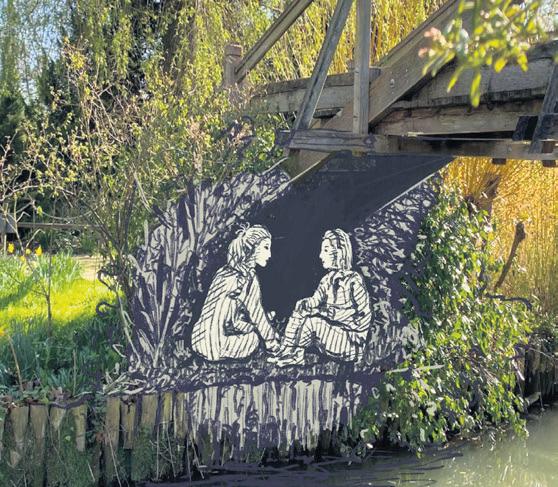
My main experience while reading was one of disbelief. Gwen describes it well: “One of the difculties in illustrating this book is that if I draw the people as they really were, they simply look impossible. Not quaint or old-fashioned; but simply impossible”. In parallel, the book reveals that the Victorians – or at least Gwen – had an innerlife we would recognise, but a society we would not. In those months, I would often walk past Darwin and peer into the windows of Newnham Grange on my tiptoes, or imagine Gwen and her siblings balancing on the garden wall, but never entered the college. When I eventually went in, I was overwhelmed. Gwen’s illustrations described a house and garden largely unchanged. rough the baywindow I could see her father’s study, still lled with books; I went up into the old granary where she would hide from church; I crossed the bridge under which Frances had converted her. Emboldened, I snuck into the house proper. In the parlour, I could see her parents warming their “cold Darwin feet” on the re. e stairs up to the Master’s study are lined with her illustrations, many of which I recognised from the book, and framed as great works of art. at the college remembers Gwen’s legacy and childhood was deeply warming. It goes without saying that I would recommend her memoirs; I think Period Piece is as perfect as a book could be.
In the documentary Ways of Seeing, John Berger introduces the viewer to one of the most famous paintings by Vincent Van Gogh: Wheat eld with Crows. In the image, black crows trace a turbulent, stretched blue-black sky into the far right corner; thick and expressive lines of yellow paint lean with the strong gust of wind; the central wheat eld is split by a meandering dirt road that appears to vanish into nothingness. Now, ask yourself, is this a painting of de ance and hope, capturing the portends of death clear for the light of summer, or one of futility and defeat, ushering in the abyss?



















Turning the frame, Berger shows the image again. But this time, scribbled beneath, includes the caption: “ is is the last picture that Van Gogh painted before he killed himself.” Although later proved factually inaccurate (the actual last painting is believed to be Tree Roots), what I have just regurgitated above is perhaps the most famous example of the importance of context in shaping our understanding of the meaning of a piece of art. As Berger humbly suggests: “It is hard to de ne exactly how the words have changed the image but undoubtedly they have.”
tions alerts us to how such para-artistic markers alter and rede ne our interactions with works of art. is small label often beneath or to the side of a work is responsible for not only instructing the viewer of the artist behind the masterpiece, but typically informs them of the piece’s title, occasionally its dimensions, and sometimes the medium used to create it. Captions also often include an enriching analysis of the work – perhaps a few sentences, at times as much as a short paragraph – to enhance the viewer’s appreciation and understanding.

Despite Berger focusing in on a particularly dramatic instance of contextual information, his attention towards the signi cance of object cap-














ese accompanying explanations can make or break a viewer’s enjoyment. You might leave the gallery feeling grati ed, departing with the internal glow of cultural expansion, or leave alienated.




ere is debate as to whether descriptive object captions should be included at all. Critics of traditional labels suggest that contextual and analytical information risks constraining interpretive possibilities. Instead of the viewer trying to appreciate a work of art, they are presented with authoritative information that undermines individual insight. Such habits cultivate an over-reliance on textual information, privileging the identity of the artist or the ‘meaning’of their work over the material and aesthetic qualities of the object. For this reason, some scholars have even labelled supplementary explanations as ‘tombstones’ for their discourage-
ment of independent insights. However, criticisms of interpretative captions also likely come from those who possess a pre-existing (and privileged) understanding of the art on display. e democratising potential of art should be an important consideration, especially in the creation of a public space. Galleries should seek to aid a viewer’s experience, alerting them towards important history, artistic biography, techniques, and themes in an e ort to bene t their experience. Ultimately, you have to start somewhere.
e content held within art labels is also signi cant. Leaning on the side of accessibility, the V&A have outlined their three rules to ensure effective communication in their captions, including: an “active voice”, the rule “write as you speak”, and keeping text “short and snappy”. All of these guidelines are designed to “write gallery text that is captivating, illuminating, and comprehensible for a wide audience”. While the V&A themselves claim that “we do not have to ‘dumb down’ our scholarship and collections” to achieve this goal, some critics would disagree. It is not merely a question of accessibility, but also about social mobility. is doesn’t mean galleries should make their detail as verbose as possible, minimising all engagement, but captions should seek to push audiences into the world of art criticism. I found that the Fitzwilliam’s captions balance these demands well. Without inundating the viewer with obscure terms, captions both introduced me to new interpretations and reinforced some of the previous knowledge I had already acquired.
Another important consideration is the acknowledgement of cultural ownership. At risk of moving into debates over the repatriation of artefacts, the ways in which art labels commemorate certain cul-
tures or recognise the covetous history of colonial acquisition is similarly signi cant. Wim Pijibes, the former director of the Rijksmuseum in Amsterdam, emphasised this fact. In his speech, Pijibes supported the concerted e ort of the Rijksmuseum to relabel and rewrite “Eurocentric vocabulary”. According to Pijibes, this work has opened accessibility to a “global audience” and given back ownership “not to countries but to people,” allowing all to relish in the art’s “global heritage”. Post-colonial critics have also articulated alternative practices to consider
❝
Captions should seek to push audiences into the world of art criticism
when contextualising art. For one, the neutral term ‘collected’ – which glosses over the power asymmetry involved in colonial interactions – should potentially be replaced with terms like ‘taken’, ‘removed’, or ‘stolen’. Additionally, collections might reference perspectives or voices from descendant communities, not just those who are a part of the institution. ere is no right way to present object captions. But hopefully a greater awareness of the considerations taken when displaying art labels will and allow you to more thoroughly contemplate the space the art is presented in, as well as the art itself.
Igrew up believing in magic. As a child who devoured Disney movies and Harry Potter books as if her life depended on it, that’s not particularly surprising. But as I got older, rather than dwindling as a result of adult denial or real-world problems, my fascination with magic only grew.
e art of magic lies [...] within the wide eyes and awed expressions of their audience
What actually is magic? Most dictionaries will provide de nitions involving phrases such as ‘supernatural powers,’ ‘the use of spells,’ ‘the extraordinary’. But a dictionary a little closer to home provides a slightly di erent de nition. e Cambridge Dictionary declares that magic is “a special and exciting quality that makes something seem di erent from ordinary things”. In this way, magic becomes not just a physical act, but an experience. It can expand to mean not just the sort of magic that witches, fairies or warlocks engage in, but the sleight of hand, tricking-your-audience kind. is is the sort of magic that began to fascinate me.
I became spellbound by magicians like Dynamo and David Blane, enthralled by their tantalising performances that can only be described as artistry. But magic itself is not often described as an art. is dismisses some of the world’s oldest examples of traditional art: cave paintings, many of which are believed to be ritualistic and magical. Moreover, the word ‘magic’ itself comes from the Latin ‘magica’, short for ‘ars magica’ meaning ‘magic art’. Yet many argue that magic does not require the same level of creative pathway or thought as traditional art; it is about logic and mental manipulation. But in the words of magician Drummond Money-Coutts, ‘magic touches people in the way great art does. It lets them see the world with new eyes’. In this way, it becomes apparent that the art of magic lies not with the magician, but within the wide eyes and awed expressions of their audience. e ability to have an impact on people in such a way really stuck with me. So, when I was in middle school, a friend and I decided to set up a magic club. We had both been learning magic ourselves through a combination of online tutorials and books, but we knew that the power of magic lay in the connection between people. us, we turned what we had lacked into the chance to prevent others from lacking the same. We started to teach basic magic and cardistry skills to any student who wanted to learn. It was during the formation and running of this club that I began to learn just how many forms magic could take. For a pre-teen girl who looked up to the prefects and other student bodies in school, it was sort of a miracle to be granted permission to








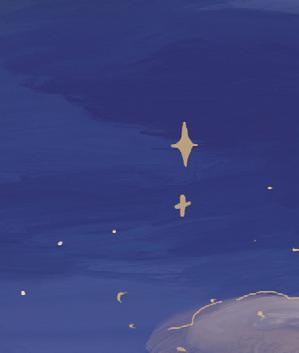


run a club so young. With that came the crackling, magical excitement of newfound responsibility and camaraderie. Most importantly of all, however, was the feeling I would get upon seeing the faces of people for whom I had just completed a trick. ose are moments I’ll never forget. e moments in which, just for a second, your audiences believe there might just be another kind of magic at play. ere is another sort of art within stage magic –its ability to manipulate lives as well as minds. Back when my friend and I ran magic club at school, the same teacher would come along every week – not because he knew anything about magic, but simply as it was his duty to supervise us. However, with every session that passed, he became more and more interested in what we were teaching. He was captivated by the comradeship it seemed to evoke among the students, and the various technical skills required for the di erent tricks. In a bizarre role reversal, he was inspired by our teaching. Before long, he would begin to arrive at our sessions with new skills and tricks he had learned, restoring the student-
teacher balance as his skills quickly surpassed ours. As I write this, he is now a member of the Magic Circle, and I am told he now runs another magic club to an enraptured audience every week, since news of his skills took over the school. Alongside this, there was a shy young girl who would come to our club religiously to learn magic, and it became a source of refuge and joy for her in dicult times. In this way, I discovered a more elusive magic in the form of connection and rehabilitation. Perhaps that is where the true art lies – the ability of magic to create new pathways and weave people together without them even realising.



















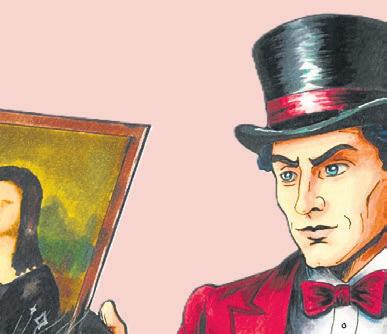


So, while I may not be able to remember many of my magical skills anymore, the memory of what magic did for me and for others still remains. What began as a slightly nerdy hobby transformed into an art form that allowed me to learn what it was like to teach, to inspire, and to connect all at once.





Maybe that was the real magic all along.
that



Ryan Potter, lead vocalist of the feel-good indie band e Hunna, is far more soft spoken than the hard-hitting, hormonal lyrics of the band’s belters suggest. We’re meeting to discuss their rst ever EP, Blue Transitions, ahead of its release this November. He is bashful as he recalls the craziest incidences of back-to-back partying and performing on the Australian leg of their overseas tours, including pre-gaming their shows with shoeys. Like Potter, the group’s latest musical venture is surprisingly pure, particularly for a band whose sound typically straddles indie-rock and strays occasionally into metal. Out on the 14th of November, the EP reects on the “natural ebbs and ows of both life and relationships”. rough a ve-song musical journey, it articulates the ideas and feelings surrounding the decision to stay committed to a relationship as it transitions out of the “honeymoon stage”. Sound-wise, the EP pulls in uences from Bombay Bicycle Club, Kings of Leon, and from their rst album, 100. It re ects on the relationships of the band: with each other, with partners, and with the industry; pulling lessons learnt from the professed “rollercoaster ride” of their career and transcribing them to ve songs that re ect their growth. It is pleasing, refreshing in its emotional honesty, and still classically e Hunna. For Potter, the EP is a nod to each member’s

‘Lover’ o the Dare album, and pairs beautifully as an updated follow up to the conundrums of love. ‘Tough Love’ feels more quintessentially e Hunna, with a mood-elevating soundtrack while musing on the “gritty part[s]” of a relationship. Jack Metcalfe’s drums shine in ‘Hide & Seek,’which feels like their most alt-rock song. Overall, the EP o ers more emotional maturity and lyrical elegance than their previous work, without losing e Hunna’s classic indie edge.
Each song on the EP has an accompanying music video, whose linked storylines rea rm the motif/ idea of the songs and videos as threads in an episodic tapestry. Each video was shot by the New York lmmaker Will McCauley.
❝
Potter brands the songs as: ‘a collection of reminiscing’
After ten years together, Potter describes his fellow band members as “brothers and best friends”. All three were born in the same hospital and grew up together through the messiness of school and adolescence in Watford. Potter credits their “fraternal-adjacent” bond as the key to surviving the music industry and to creating their art. He maintains that their closeness has allowed them to consistently and successfully create in “collaboration not competition” and recognises the rarity of their dynamic in an often cutthroat industry. e years they’ve spent as best friends mean that “we understand each other, who does what, and who won’t do interviews et cetera”.











Haunting sounds in a haunting city
e Music team are here with the soundtrack to your Halloween
Cambridge seems like a city made for all things eerie and beautiful. is Halloween, we’ve curated a playlist that is haunting, kind of unsettling, yet still mesmerising.

Daisy: ‘A Forest’ by e Cure is a song that exudes the moody, mesmerising character of the season. A big time miss from Lynch and Frost, supposedly Robert Smith wrote the song for Twin Peaks (a TV show best digested around Halloween). at creeping bassline coupled with the shifting synths and snares, makes it a tune that always goes down well at a goth night. It’s one that I’ll be listening to this term “again and again and again (and again)!”
Seun: ‘Call My Blu ’ by Pusha T has synths that you might nd in a sci- thriller, where something absolutely ridiculously scary is going to appear behind that equally scary door. Except, the scary moments in this lm are when you did not run Pusha’s errands quick enough, and some guys are going to be sent “round there right now” to do some, presumably scary, stu to you. He even begs you to “call my blu ” with chilling delivery.
growth over the ten years that they’ve been together. He muses that: “We’ve grown and changed [at least somewhat as people] over the years … I’m not sure if we are that much wiser but we’ve de nitely grown”.
❝
e result is pleasing, refreshing in its emotional honesty and still classically e Hunna

According to band’s frontman, Blue Transitions speaks to those “transitional points” in relationships, and choosing to continually make the same commitment to a relationship when “the going gets a little tougher”. e album is an exercise in thinking about how to move forward from such moments. ‘Bloom’muses whether to stay in a relationship at a crossroads and aim to “bloom and breathe,” or whether it’s better to go separate ways. It’s tone is similar to their earlier track
e central question of the EP – whether a relationship can still prosper after it changes – re ects a plethora of shifts in e Hunna’s personal lives. e album grew out of a decision to step away from both their old label and management to go independent. Potter explains that: “[We] dropped everything and went for the unknown … changing our management, label, and booking agent in one”. He explains that they felt a new maturity as musicians and felt ready to take on the production themselves rather than rely on a label and its visions “put onto you”. He jokes that: “You don’t want too many cooks in the kitchen,” and a rms that after going independent, “we are now in a place to create from the most real place that we’ve ever been in”.
ough they’ve completed several albums now, Blue Transitions is their rst EP. Potter says that they were not mentally or emotionally ready to create an album after a whirlwind of tours and the last album.

To me, e EP is a re ection of a very grounded band, who, despite completing several packed out tours and partying away the nights as one might easily envision, are rooted in wanting their music to work through and reminisce on their own challenges of personal growth. Indeed, Potter brands the songs as: “a collection of reminiscing,” trying to make sense of experiences that are relatable and universal. Its themes of emotional struggle and honesty are refreshing to a pop world dominated by songs about sexual grati cation, the heady pursuit of a crush and the undying love of someone. Although all of these have their rightful place in the music scene, it’s reassuring to nd a band so open to discussing the tribulations of love.
e Hunna are bringing Blue Transitions and their usual repertoire of mood-boosting indie bangers to Cambridge Junction on the 24th of November Will they do more shoeys on stage? Potter makes no promises. e Hunna might be growing up, but they’re not slowing down.
Caitlin: Seeing as Halloween is often lovingly known in the LGBTQ+ community as “Gay Christmas,” Elliotly’s queer cannibal romance in ‘he’s a cannibal!’ feels extremely apt for a Halloween playlist. e saccharine staccato synths carry an 80s-pop-meets-Tumblr-trend feel, arguably the only appropriate underscore to such a narrative. is track is especially perfect for any couples preparing joint costumes this year; maybe this says something about me, but there’s a Twilight-esque romanticism in Elliotly’s lover restraining their man-eating tendencies for him…
Francis: From the rst few piano chords, you know you’re in for a chilling emotional ride, when listening to ‘Videotape’ by Radiohead. is song, to me, captures the apotheosis of Yorke’s vocal ability. His words are tortured and constrained as he viscerally captures the feelings of grief and loss, layered over the creepily returning sound of rolling lm reel that grows organically, haunting the entirety of the song.

Millie: e cover of the classic Rolling Stones track, ‘Sister Morphine’ by Ren Harvieu is perhaps most haunting, thanks to her eerie vocals. One of the most spellbinding acts of the current alternative circuit, this B-side to her outstanding debut EP ‘Open Up Your Arms’ stands as testament to her creativity and originality as an artist.


Owing to its unique historical background as a Chinese territory and later British colony, Hong Kongers grew up embracing traditional Chinese heritage, yet were also exposed to international in uences and methods of storytelling. is multicultural environment allowed aspiring lmmakers to pivot from stories that focused solely on one culture, using trilingual dialogue to craft narratives that amalgamate cultures, making them both familiar and refreshing to Eastern and Western audiences alike. By retaining a degree of stability in the years of Chinese political turmoil and taking advantage of it to create networks into international cinema, Hong Kong was able to enter its golden age of lmmaking, placing it on the map and giving rise to internationally-acclaimed stars like Bruce Lee and Jackie Chan. But kung fu isn’t all that Hong Kong cinema has to o er – if you dig deep enough, there’s always something for you.
Internal A airs (2002)
Before there was Scorsese’s e Departed, there was Infernal A airs. e story follows Lau (Andy Lau), a gangster in ltrating the police force as a mole, and Chan (Tony Leung), a cadet that is sent undercover into the triad. e title is a witty play on the words ‘infernal’ and ‘internal’ signifying rst the existence of an enemy from the inside, as well as the hellish experience of the two young men who slowly lose sight of their institutional
allegiances. ough the premises of the lms share similarities, Infernal A airs is a unique allegory for Hong Kong’s in-betweenness after the 1997 Handover, re ecting the anxieties of the people whose relationship with Britain has been severed, and whose ties with the Mainland remain brittle. While Scorsese excels at amping up the tension with brutal combat and visceral death scenes, Infernal A airs is more pensive, drawing out meaningful discussions of moral redemption and emotional turmoil.
e Last Dance (2024)
❝ e Last Dance tackles all the taboos generally shunned in Asian society
Hilary Lau taking
As more lmmakers challenge themselves to shed light on di cult topics, Hong Kong’s lm industry has seen a renaissance in the post-COVID years, yet none have reached such record-breaking success as e Last Dance. e lm became the highestgrossing domestic lm in the history of Hong Kong cinema, and has since been nominated for Best International Feature Film for the 98th Academy Awards. Following mass unemployment during the COVID-19 pandemic, wedding planner Dominic (Dayo Wong) joins a funeral parlour and partners with Master Man, the priest in charge of the Taoist funeral rite known as ‘Breaking Hell’s Gate’. is movie tackles all the taboos generally shunned in Asian society – a mother who tries to mummify her long-dead son, a female partner of a married woman forbidden to see her in her nal moments –yet all deal with a fundamental revelation: funeral rites are not only done for the dead, but also to comfort the living. In a society where discussions of death are generally kept under wraps, e Last Dance gracefully guides its audience through a somber contemplation of mortality, recon guring the mechanisms with which we deal with grief and transforming the act of mourning into a celebration of life.
Director Stephen Chow specialises in comedies that combine slapstick humour with witty puns and social satire. His style of mo lei tau (‘nonsense’) comedy transcends generational gaps, making him one of the most beloved household names in Hong Kong. e movie follows a secret agent 007 who is tasked to recover a stolen T-Rex fossil, stolen by an elusive villainous mastermind Golden Gun. Several of Chow’s lms parody traditional Chinese stories, such as A Chinese Odyssey (referencing Journey to the West) and Flirting Scholar (with characters based on the Four Masters of the Ming dynasty). is lm is a homage to James Bond: the direct Cantonese translation of the title 國產凌凌漆 is ‘Domestically-produced 007’. From Beijing with Love is a treasure trove for audiences uent in Cantonese, while o ering a light-heart-ed viewing experience for those who wish to experience the best that Hong Kong cinema has to o er.

Every year, thousands of TV shows are created globally, so when a show has longevity, it likely means it is enjoyed by many for being exciting, a comfort show, or dramatic. Crime shows make up a large number of these cult classics, from Criminal Minds to Law and Order, NCIS to Chicago PD. It’s likely most of us have watched some crime at some point in our lives. With these shows lasting so long, it’s no surprise that the genre attracts many die-hard fans, whether it’s the gruesome plots that get us hooked or the background comfort of a show like Brooklyn 99. But why are we so drawn to crime shows?
e continued success of these shows over the past 20-odd years has coincided with a rise in true crime in the wider culture – through podcasts, dramatised Net ix specials, or reimagined history shows like Unsolved Mysteries, it’s not hard to nd a x. But these stories often encourage us to think about the darkest corners of humanity, even more so than ctional tv; in theory, we should be exhausted and put o by all the gruesome imagery, and yet for most of us it isn’t in the slightest bit deterring.
It’s human nature to be curious about our own behaviour. Some say the genre is popular for different genders for di erent reasons, with women watching because of a desire to empathise and understand the victims and perpetrators, and men for a vicarious protectiveness. But I would argue it’s far more complex than this.
We all enjoy feeling like we know something about the inner workings of our complex systems of law and order, and these shows give us that surfacelevel validation. On top of this, listening to and watching crime stories can be a method of fear management. For example, those who are afraid of
ghosts are more likely to learn about the history of a new house so that they are aware of anything that might incite their phobia. By understanding motives and contexts, the prospect of being victimised can feel less terrifyingly possible.
Serial killers in particular tend to become a subject of fascination on screen. Whether we are encouraged to sympathise with the pathetically delusional, or our curiosity is piqued by pure
‘animalistic tendencies’ that speak to the nature versus nurture debate, we are drawn to understanding abnormal behaviours. Historically, TV and lm producers, realising the monetary draw of glorifying violence, have preyed on this attentiveness, creating glamourised Hollywood murderers like Norman Bates, Hannibal Lecter, and Michael Myers. In this sense, there’s something uniquely appeal- ing to writers within such a genre – complete freedom to design outlandish behaviours their protagonists that somehow don’t stray into
The massmar- ket shows of recent years go further, combining graphic, can’t-lookaway characters with a romanticisation of the entire
criminal process. Elaborate plots, bureaucratic obstacles, and disturbed personas form the recipe for a perfect crime thriller.
ere’s always a new angle to explore with a crime drama, a new trigger that sets o a murder, an unusual set of circumstances around the crime scene. You never run out of new ideas – although by episode 300 you might have to work a bit harder. When you combine these draws with the self-contained nature of crime shows – having a di erent plot line each episode, making it easy to dip in and out without cli angers and complex long-term threads – it’s no surprise that crime TV has captured so many loyal viewers over the years.

sation. At first, the brutal truths able ugliness of nal Minds’ serial kill- ers ofto the system that attention in a world dopamine-inducing more we
e result of this, however, is rapid desensitiof true Crimifer a shock catches our of constant content. But the watch, the less
shocked we are, the less disturbed – but no less entertained, thanks to the perfect formula of crime TV. It strikes an ideal balance between the tension that hooks a viewer, and the procedural structure that gives us some comfort and reassurance about the real world around us.
❝ It’s human nature to be curious about our own behaviour
is makes it no less worrying, however, when one day you realise your brain is barely stimulated by the appalling murder splayed across your screen. Maybe this explains why new horror lms often feel the need for several layers of perturbing meanings on top of violent scenes and jumpscares. We begin to lose the simplicity of some of the best, classic horror lms to grace our screens thanks to the overwhelming amount of ctional and true crime content at our ngertips.
But it is reassuring to know that we’re not alone in loving the thrill of crime TV, true or ctional, gory or otherwise. So many of us get hooked for a reason; we can learn something about ourselves as a species, as a society, all wrapped up in a tense, entertaining episode which, more often than not, ends with the ‘bad guy’ caught, our faith in order restored once more.
Andrew Lippa comes with more than a sprinkle of stardust – an in uential and proli c gure in theatre, the multi award winning writer of musicals including, of course, e Addams Family: he has it in bucket-loads! As a superfan of his work in general and e Addams Family in particular, and currently embarking on directing Addams for the ADC, I was both very excited and extremely nervous to interview one of Broadway’s greats, but Andrew was gracious, funny and passionate about his art. Phew.
From a childhood background of music played in the synagogue, Andrew didn’t learn piano until the age of 14 and rst appeared in a musical – e Pajama Game – in high school. ere he learnt “how a musical works” and began his, now 45 year, love a air with musical theatre. At the beginning of his career, he wrote Wild Party which is a favourite of his (though he acknowledges he “loves all his children!”) as at that point no-one was looking for him to write a musical and he just wanted to write something that thrilled and excited him. Its success (it was nominated for 13 Drama Desk awards in 2000) gave him the foundation on which to build his life in musical theatre.
To still continue to pursue such a successful career – Andrew currently has seven full length projects coming to fruition – I wondered what motivated him. Partly, it felt very personal as he spoke about his love of spending his days in collaboration with other creatives and his own internal dialogues with his characters, considering what they might want, what they might do, gradually building a musical. He described it as “silly” and “a little unmoored” but also joyous and exciting. In tandem with that creative process, it is what musical theatre brings: that “combination of art forms from design, dance, music, storytelling, and language” with the added element of live performance, that he continues to nd incredibly fascinating.
❝ Play honest beats. ey are people trying to get by
ere is such an enthusiasm in the way Andrew speaks about theatre, and I think all budding actors and creatives can relate to his understanding that while, as he says, he doesn’t “make buildings or sew people up after an accident”, what he does contribute to making is “a kind of soul healing”. at might be something funny or deeply moving or anything in between, but what it does is “give people opportunities to bring their feelings into the room and see other people go through things that they can recognise as true”.
▼ ANDREW LIPPA
The importance of empathy came across strongly again when we discussed the signi cance of the arts in education. Andrew sees performance as giving
young people the opportunity to step into “new reality, new people, to learn more about themselves”. is opening a door to empathy and exploration for performer, creative and audience member felt like a validation for all of us trying to make our way in this sometimes di cult and demanding industry.
You don’t write theme, you write character, story and plot
As a new director of e Addams Family, I was interested in the message behind a musical but Andrew was clear that the theme lies underneath the story – “you don’t write theme, you write character, story and plot”. He described musical theatre as a long form because it involves “contact, character, story and time”, with the attraction to a project being based on his taste and whether he wants to live with these characters for several

years. e Addams Family brought its own set of challenges, in particular the fact that audiences have varying degrees of knowledge and expectation, but the musical is a new beginning, they now sing! His decision to open with 16 bars from the TV show allows the audience to settle in and enjoy that starting point, and from then on its full Andrew! Comedy, of course, is a strong element of the production but Andrew also highlights the more emotional aspects and the importance of enjoying the morbidity of this unconventional family, but also recognising and feeling that they are real: “Play honest beats. ey are people trying to get by”. ey are characters who are adjusting to and embracing new situations and di cult emotions, who want things “deeply and go after it with love and passion,” and the audience know that is real and is connects with them. One of his favourite moments is the nal song ‘Move Towards the Darkness’. It was fascinating to hear Andrew speak about this, and how it is based on the idea from American writer Joseph Campbell that the cave you fear to enter holds the treasure you seek. e members of the Addams family know this and understand that “only at our lowest can we rise above,” as well as the importance of being open to the new and not closing yourself o – even if that means exploring the deeply sad. e fact that this moment is undercut by being articulated by Lurch, a character who is neither dead or alive, highlights both the emotion and the comedy, and it was such a privilege to gain a small insight into the amount of thought and passion that goes behind each element of a musical.
is




Eleanor Baldwin argues classical tales still challenge us in ways we might not expect






















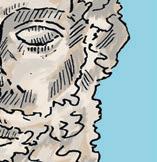















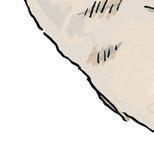






I couldn’t let the interview end without asking, on behalf of all us hopeful actors and auditionees, what he is looking for when reviewing tapes and auditions. He spoke of hoping the actor will “illuminate it in a certain way”, to creatively interpret the piece he has created. Beyond careful preparation and digging deeply, bring your interpretation and seek to be the “spark” they are looking for. ere is a fantastic practicality in Andrew’s advice so I’ll end with two great pieces of guidance – “musicals don’t happen if people don’t do them” and “play it honestly”.
The Addams Family runs from Tuesday 28th October-Saturday 1st November at the ADC eatre from 7:45pm, including a 2:30pm matinee.
Ancient myths provide a framework for understanding contemporary issues. e mythological gure of Cassandra, an ancient Greek prophetess, epitomises how enduring these stories can be. Bestowed with the gift of prophecy, yet fated to never be believed, Cassandra personi es the tension between the voices we give weight to and those we dismiss. On stage, the gure was re-imagined in 1908 in Lesia Ukrainka’s poetic drama Cassandra, which retold the classic myth from Cassandra’s perspective. Ukrainka’s drama was an act of resistance, subverting a series of myths which have historically focused on male heroics. By staging the myth in dramatic form, Ukrainka makes us feel the burden of silence: not just what Cassandra says, but how we, as the audience, hear her. After all, it's not the act of speech that fails Cassandra, but the reception of her words. is begs the question: is Cassandra’s audience itself the chorus that fails her? e enforced silence of the prophetess can be seen as a re ectsion of present-day repression, where uncomfortable realities are suppressed for the sake of ‘clean narratives’ – ones which are safe, palatable, and re ective of our zeitgeist’s status quo.





e myth of Cassandra is not the only adaptable story. A myriad of other tales continue to be reshaped to confront questions of identity and power. Last year, the Pembroke Players adapted Euripides’ Bacchae to create a piece that explored queerness and self-repression. is play’s quasiPentheus, Joseph, was intoxicated by the unashamed freedom of the Dionysiac gure (a selfproclaimed god called Casey). Similarly, Jean Anoulih's Antigone, performed at the Corpus Playroom, reinvigorated a classic Sophoclean tragedy. is play balanced tragedy and comedy to ask if Creon is a king we should condemn or sympathise with. It is this interweaving of classic myth and contemporary themes that makes these productions so illuminating. I can only wonder how Euripides and Sophocles themselves would have reacted to this kind of adaptation – if only there was a newspaper for dead playwrights.
To restage mythological gures is to present themes which still resonate and always will. We must continue the dialogue that surrounds these myths, while recognising their shifting contexts, so we can challenge the idea that they only belong in the past. eatre must engage actively and in a nuanced way, encouraging conversations about issues we have ‘moved past’
Our modern Cassandras are not on stage, highlighted by spotlights and clothed in starspangled costumes, they are often far more hidden. ey are people whose warnings are dismissed until the curtain falls down and the theatre is left empty. ey are ignored and disbelieved, until Troy is burning and the Greeks have gone home.
If the area of the outside square is 100cm², what is the area of the inside square?
What percentage of respondents successfully solved this?
Life Drawing Session Buckingham Room, Magdalene College, 7pm
Student Book Tour Kettle's Yard, 5pm 6 November
150th Anniversary of he Corn Exchange Celebration Event Corn Exchange, 6:30 pm 11 November
Cambridge Film & Screen: ‘What is Newest in What is Oldest’: Towards a Theory of Peasant Cinema Little Hall, Sidgwick Site, 5:30pm 11 November
CUFA ilm club: Alternative Storytelling ‘Grand heft Hamlet’













ArcSoc talk: Owen Hatherley 1 Scroope Terrace, Architecture Department, 5pm 12 November
Walking through the Dead of Winter with Sarah Clegg Waterstones, 6pm
Named Desire ADC 7:30pm 13 November An Evening of Chekhov Downing College, 7pm

‘The shine has been taken off the Olympic rings’: Beckie Scott on overcoming sport’s dark side
When Beckie Scott warns that “sport leadership is not interested” in accountability, alarm bells should start ringing. And when she adds that “it’s the public who have to hold sport accountable” because some of its most prominent organizations have been unable to “withstand the pressure of the business interests” –then it is time for all of us to wake up and listen.
It is no exaggeration for Scott to say that she has “lived sport at every level”. e 51-year-old has sat in sport’s loftiest boardrooms and stood atop its most coveted podiums. She has been an inextinguishable ray of integrity in the maelstrom of sport’s bitterest scandals, and touched thousands of lives through a sport charity she founded. Canada’s most decorated cross-country skier, a former member of the International Olympic Committee (IOC), and ex-Chair of the World Anti-Doping Agency’s (WADA) Athlete Committee – few have “had a foot in the dark side of sport and a foot in the light side” quite like Beckie Scott. e 17-time ski World Cup medallist is quick to admit that over her career she became “cynical about sport administration, the business of sport, and what was happening behind closed doors”. Delve into her history, and it is easy to see why. In 2018, Scott resigned from WADA’s Compliance Review Committee in protest of the Russian anti-doping agency’s deeply controversial reinstatement, after WADA leaders covertly softened key conditions for Russian re-compliance in the wake of widespread state-sponsored doping. At a subsequent WADA executive committee meeting, she was the victim of alleged bullying.
body had ever dealt with a situation like that before.”
e scandal-shrouded experience ignited a perhaps uniquely “strong sense of fairness, equality and equity” in the Canadian, and a zeal for advocacy that would compell the BBC to describe her as “the nearest thing the Olympic and Paralympic athlete community has to a gurehead”. So how does someone who was at the forefront of clean sport re ect on a contemporary landscape where the stench of foul play still lingers?
“For a while [at WADA], it really felt like the good guys were making progress. And then I think it really shifted after Russia. e decision making and the principles behind anti-doping changed. I know that they just couldn’t withstand the pressure of the business interests”.
In an ominous statement for the future of clean sport, Scott admonishes: “ ere’s too few people left to hold them accountable and really drive change. ey’ve either left or been discouraged, or they’ve been silenced in some way, shape or form.”

the spirit of humanity. You’re happy for them or you’re crying for them. ey kind of save it”



e shine has been taken o the Olympic rings for sure
As the incumbent CEO of Canadian Cross Country Skiing, Scott now nds herself back in the heart of sport’s administrative underbelly. But does she still bear any scars from her experiences inside its murkier cavities? “I wouldn’t say scars, but I would say lessons learned. I saw so many people lose sight of the athletes and forget why we’re really here so quickly in the boardrooms, and just get so wrapped up in the business, the politics and the end goals which had nothing to do with the values of sport.”
Scott joined WADA in 2005, a year after receiving one of the most unprecedented gold medals in Olympic history. Her historic Salt Lake City bronze soon became silver before nally turning gold almost two and a half years after her race when the two Russian skiers who initially nished ahead of her were found guilty of doping. North America’s rst ever Olympic gold in cross country skiing was awarded at a Vancouver Art Gallery. As Scott candidly puts it: “No-








It all begs the question – is WADA still t for purpose? In January, the organisation was rocked by the US government’s refusal to pay $3.6 million in annual dues after 23 Chinese athletes who tested positive for Trimetazidine remained eligible to compete at the Paris Olympics. is summer, suspected bias in WADA’s three-month suspension for tennis superstar Jannik Sinner led Stan Wawrinka to declare “I don’t believe in a clean sport anymore.”
Beyond the charges of malpractice that have dogged its top bodies, a new spectre is haunting clean sport – e Enhanced Games. Next May, athletes will be able to use performing enhancing drugs to win up to $1 million should they break a world record at the deeply divisive competition, set to be held in ‘Sin City’, Las Vegas. Scott is absolutely unequivocal about the entrepreneurial venture: “It totally erodes all the principles of sport, the fair competition, the contest” – the very values she became synonymous with upholding. But to the former WADA Athlete Committee Chair, the prospect is not just unethical, it is outright dangerous. “ e Enhanced Games is incredibly irresponsible and reckless. Anti-doping was created out of a number of moral principles, one of which is to protect the integrity of sport, the other being to protect the health and wellbeing of young people.” Her impassioned plea against
than the general population’s in Scott’s home state of Alberta, and Scott simply “couldn’t look away”. “I felt like, okay, I have something to give here. I have the knowledge of the power of sport; I myself was shaped and transformed by sport. Why wouldn’t we o er that to kids who are so marginalized and so vulnerable?”


Is it easy for beginners to join lacrosse?






Scott was the kid with a pair of skis and a dream, now she runs Canadian cross-country skiing. She’s been plunged into the depths of sport’s shady underworld, and now uses sport to uplift ostracized children. e mother-of-two even nds time to commentate on the races she used to win. Few have experienced sport’s aws rsthand quite like main as irresistible as ever. But why? “It’s just the just unlimited opportunity it has to continue to uplift, to transform and connect people to positive outcomes, bring people together and create a sense of belonging for kids. e mental health, the physical health, all the bigger picture of sport and what it really contributes to us as a society, is inherently positive. at’s why I keep coming back to it.”
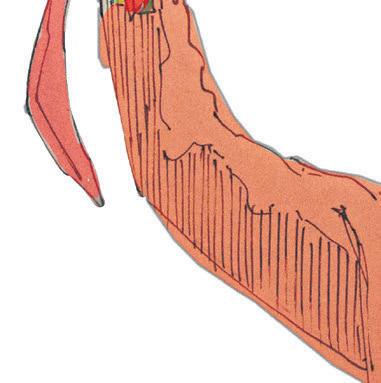
Beckie Scott, yet its hold seems to re-
Absolutely! Most of our current players, including me, only rst picked up a stick since coming to Cambridge. I started out with my college mixed team (Emma Roar), then spent a year with Uni Mixed before joining the Men’s team. We’ve got a really welcoming group with a good mix of experience levels, and everyone’s happy to o er tips to new players. If you’re even a bit curious, just come along and give it a go!
How do you balance sport and work?
As a clinical medic on placement, it can de nitely be tricky to make every practice or game. But I try to make as much room as possible – lacrosse training is the best part of my week. It’s a great reset from the hospital routine, even if it sometimes means a few early starts to make it back to Stevenage in time for the ward round.




Scott has no hesitation in saying: “I think (WADA) are going that way. e Chinese swimming scandal prior to Paris really exempli ed that. It should have been an open and shut case and […] it got completely distorted. I think that WADA is unduly in uenced by the IOC, and that has just severely injured their ability to be e ective.”
Elected to the IOC’s Athletes’ Commission by her fellow Olympians in 2006, Scott is no stranger to the inner workings of the Games. Having also sat on the board of directors for 2010’s Vancouver Winter Olympics, she laments the veil of controversy that now shrouds the world’s greatest sporting spectacle: “Prior to the Olympics we almost always hear of something scandalous or something that’s happened. e shine has been taken o the Olympic rings for sure. Over time I think people have become generally more cynical and less trusting of the IOC in particular.”
And yet for someone who has both witnessed and also lived the consequences of corruption in sport, Scott refuses to be disillusioned: “It is easy to get cynical and pessimistic about sport and particularly sport leadership, but then all you have to do is turn to the athletes to feel hopeful again.” Speaking in an Olympic context, Scott’s sanguine words would resonate with even the most jaded of fans: “Once the sports start, it becomes all about the athletes again. It’s the athletes who inspire and it’s the athletes who really demonstrate

ity: “Many athletes are at an incredibly impressionable time in their lives and they really run the risk of being drawn in to activities like doping […] without protection and any care for their long term health and wellbeing.” It boils down to safeguarding human beings “who may be vulnerable to the pressures from corruption and outside sources […] and then something like an Enhanced Games just glori es that.”
While her anti-doping activism has been near-peerless, Beckie Scott’s inspirational footprint goes well beyond illicit substances. Even while she was navigating “the geopolitics and the discord” in her capacity at WADA, Scott was simultaneously living “the double life”. In 2017, amidst “travelling to these meetings in Geneva or Tokyo or wherever around the world,” the ever-remarkable Scott founded Spirit North, a charity that uses sport and physical activity to empower over 18,500 young Indigenous Canadians each year.
Scott has long been distinguished by her singular social conscience, and upon reading Canada’s seminal 2015 ‘Truth and Reconciliation’ report – which concluded that the government implemented a “policy of cultural genocide” towards Indigenous people – she “just couldn’t go home and say that’s not my problem”. Indigenous life expectancy remains a staggering 19 years shorter

Best bit about being captain? Having only joined Men’s lacrosse last year, I’m still learning and improving myself, but being able to pass on what I’ve picked up to the new players has been really rewarding. Seeing their progress and enthusiasm is what makes it all worth it – and I can’t wait to see how far they’ll come by Varsity.
Worst bit about being captain? De nitely the weekly barrage of WhatsApp messages trying to chase everyone for their availabilities. Herding lacrosse players is a skill in itself. Any pre-match rituals? A strong co ee in the morning, followed by a heavy dose of techno that one of our players insists on as we warm up.

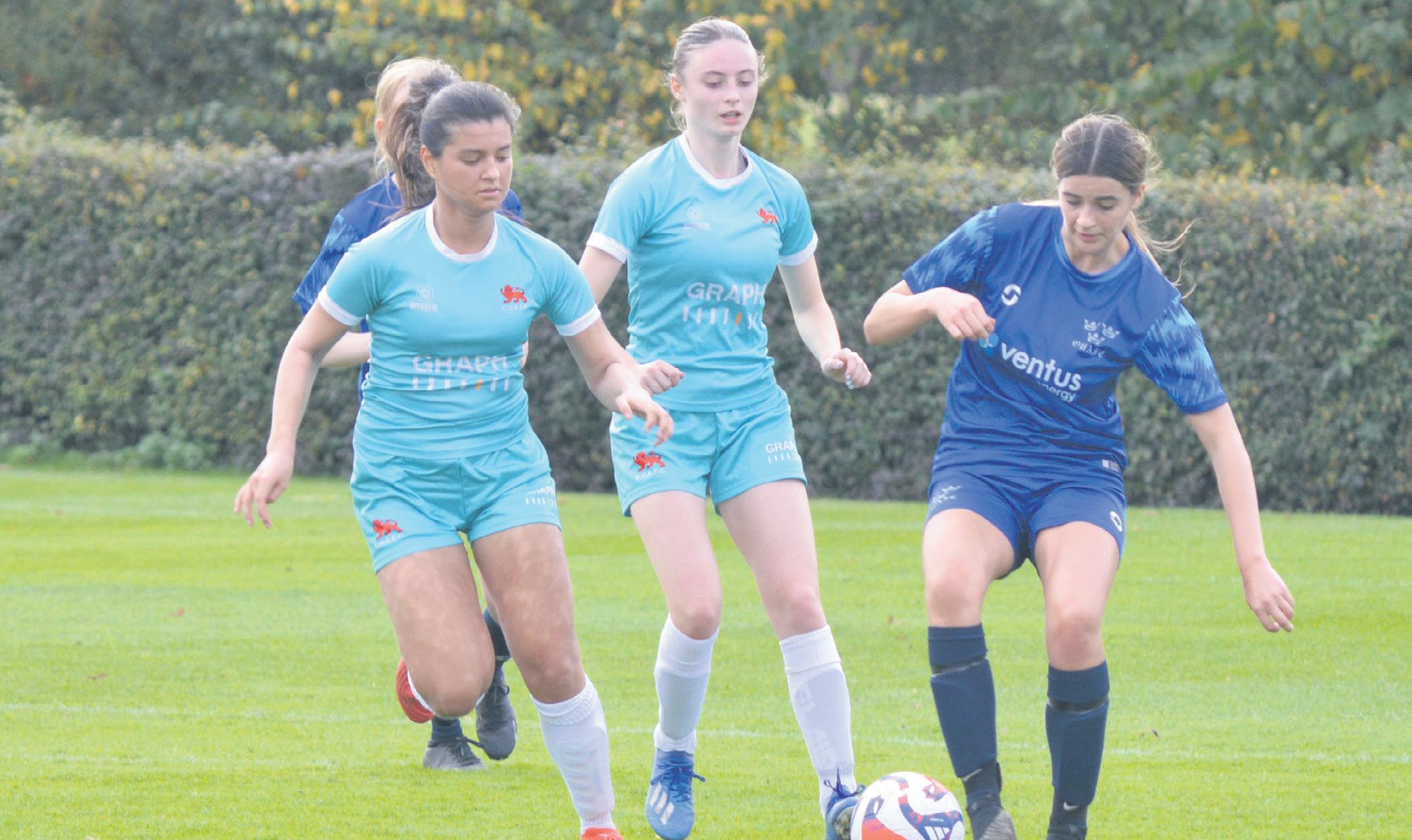



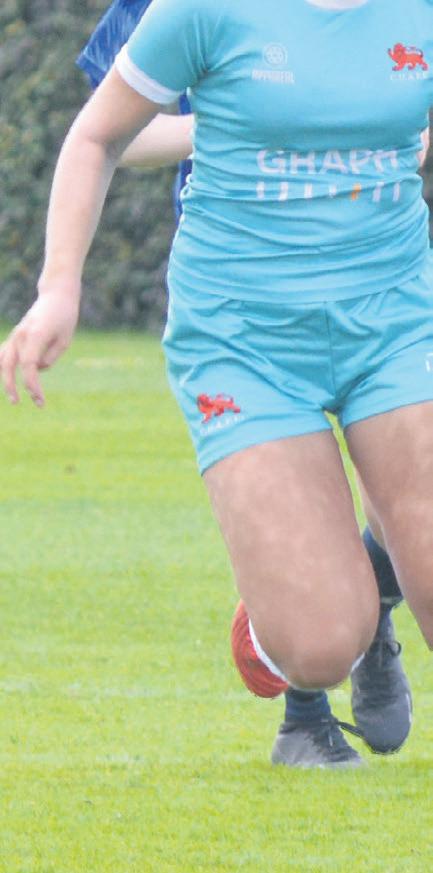





Oxford maintained their strong early-season form with a clinical 4–0 victory over Cambridge, in a match that saw the visitors’ defensive organisation and ruthless nishing prove too much for a determined but ultimately frustrated Cambridge side.
ere were perfect conditions for the renewal of one of Britain’s oldest rivalries, with a soft pitch and a light drizzle. Oxford’s Blues looked to build on their opening day win, while Cambridge sought a repeat of their victory the last time they faced this Oxford side.
It was a contest that started with intensity from both sides, though it was Oxford who struck the rst blow. e visitors were gifted a golden opportunity from 12 yards, and their striker made no mistake, slotting it past Sophie Perret for the hosts to open the scoring.
at early goal set the tone for much of the rst half as Oxford’s pace and movement in the nal third continually caused problems for the Cambridge back line. Barely 15 minutes later, Ox-
ford thought they had doubled their lead when a swift counter attack ended with the ball in the net, only for the assistant’s o side ag to cut short the celebrations.
e disallowed goal came as a relief for Cambridge, who had been struggling to nd rhythm in possession. An injury to one of Oxford’s mid elders midway through the half allowed the hosts to regroup, and Cambridge began to look more threatening, especially down the left ank where Martina Abels Marti and Sakina Dhirani combined well to win a corner. From that set piece, Cambridge came agonisingly close to levelling, the ball cleared o the line by an Oxford defender.
Despite that brief spell, however, Oxford’s defence stood rm, clearing their lines and maintaining their narrow advantage.
Perret, meanwhile, was kept busy, acting as a sweeper to intercept dangerous balls over the top, testimony to Oxford’s willingness to exploit space behind the defence.
As the half progressed, Oxford regained their composure and control of the game. eir set-piece prowess continued to threaten, and in the 35th minute they once again found the net – only for the assistant referee to rule it o side once more. Cambridge’s reprieve was shortlived, however. Just before the break, Oxford broke through again, slicing open the Cambridge back line with a sharp passing move before sliding the ball across goal for a simple tap-in to make it 2–0.
Cambridge entered the interval knowing they had competed well for large portions of the half but had been undone by Oxford’s clinical edge.
e second half began with Oxford on the front foot once again. e visitors were rst back out onto the pitch and they created the rst big chance after the restart, their striker racing through on goal only to squander what looked a certain third goal. at miss could have o ered Cambridge a lifeline, and moments later they nearly took it: Christiana Wayne’s curling free kick was destined for the far corner, only to see it heroically headed o the
line by an Oxford defender. Despite some promising moves, Cambridge found themselves struggling to gain any real foothold. By the hour mark, frustration began to creep in as several attacks broke down without truly testing Mourney in the Oxford goal. Another series of corners failed to yield results, and as time ticked on, Oxford looked increasingly comfortable absorbing pressure and hitting on the counter. e game began to heat up around the 70-minute mark, rediscovering its characteristic ght with some good battles in the middle of the park. Alexandra McGarry continued to determinedly drive her team forward, winning a free kick and showing great footwork to keep Cambridge’s hopes alive.
In the 78th minute, Oxford delivered the decisive blow as they found the bottom corner with a composed nish to make it 3–0. at goal all but ended Cambridge’s comeback hopes, though they continued to battle on.
Substitute Vicky Olamona embodied that ghting spirit late on, driving
through the middle to try and carve out one last chance for the hosts. Yet as Cambridge pushed forward, gaps opened at the back. Oxford exploited one such moment ruthlessly, adding a fourth goal in the closing stages to put a nal nail in the Cambridge co n and seal a commanding victory.
ere was still time for one nal glimpse of what Cambridge were capable of – Christiana Wayne threading an excellent through ball into the path of Martina Abels Marti – but once again the Oxford keeper remained untroubled as the shot was red wide. It summed up the afternoon: plenty of e ort and ashes of quality from Cambridge, but no end product to show for it.
As the nal whistle blew, Oxford celebrated a polished performance and a result that re ected their clinical nishing and defensive solidity. A tough day at the o ce for the Light Blues, but Cambridge will look to bounce back quickly at Loughborough next week.



is week I sat down with Men's Lacrosse captain Jasper Bates, asking him about his sporting journey and appreciation for techno music. Why lacrosse?
game. It’s also an exciting time to be part of the club, with our rst batch of players having earned Blues last year!
Best sporting moment?
rugby cup match in the freezing rain. And the showers didn’t even have hot water afterwards.
Who is your sporting idol?


I’ve always been sporty – I grew up playing rugby, football, and tennis – but when I came to uni I wanted to try something new. Lacrosse has the physicality of rugby, the hand-eye coordination of tennis, and the stamina of football, all rolled into one fast-paced, slightly chaotic
Scoring in last year’s Varsity Match to help us beat Oxford for the rst time in 13 years! It’s hard to top that mix of adrenaline, disbelief, and pure celebration. And boy were there some serious celebrations…
Worst sporting moment?
Missing the conversion to win an U12s
Jonny Wilkinson. Although I’m not quite old enough to remember it live, his drop goal to win the Rugby World Cup for England is one of those timeless sporting moments. e precision, composure, and sheer drama of it – that’s the sort of thing every athlete dreams of.